Shoring up Cushing’s working waterfront
A fishing town aims to add a public boat launch
BY CHARLES EICHACKER
Longtime fisherman Danny Staples has his own wharf on Pleasant Point Gut in Cushing, where he and several others can access the water, land lobster, and do some maintenance of their vessels.
But that piece of waterfront didn’t help Staples this past fall, when his boat’s rudder broke as he was several miles out to sea hauling traps, near Old Horse Ledge. He first got towed back to Cushing, where he beached the boat to assess its damage. Fixing it there wasn’t possible, so he had to get it towed another nine miles up the St. George River to Thomaston so it could be removed from the water for a repair.
The ordeal highlighted a difficult aspect of fishing in Cushing: while the Knox County town has plentiful deep harbors where fishermen can bring their catch ashore, it has no public boat launches. If it did, Staples could have gotten his broken-down vessel out of the water much closer to home.
“I needed to be hauled out ASAP,” he said. “It would have been awful nice, and awful secure, to be
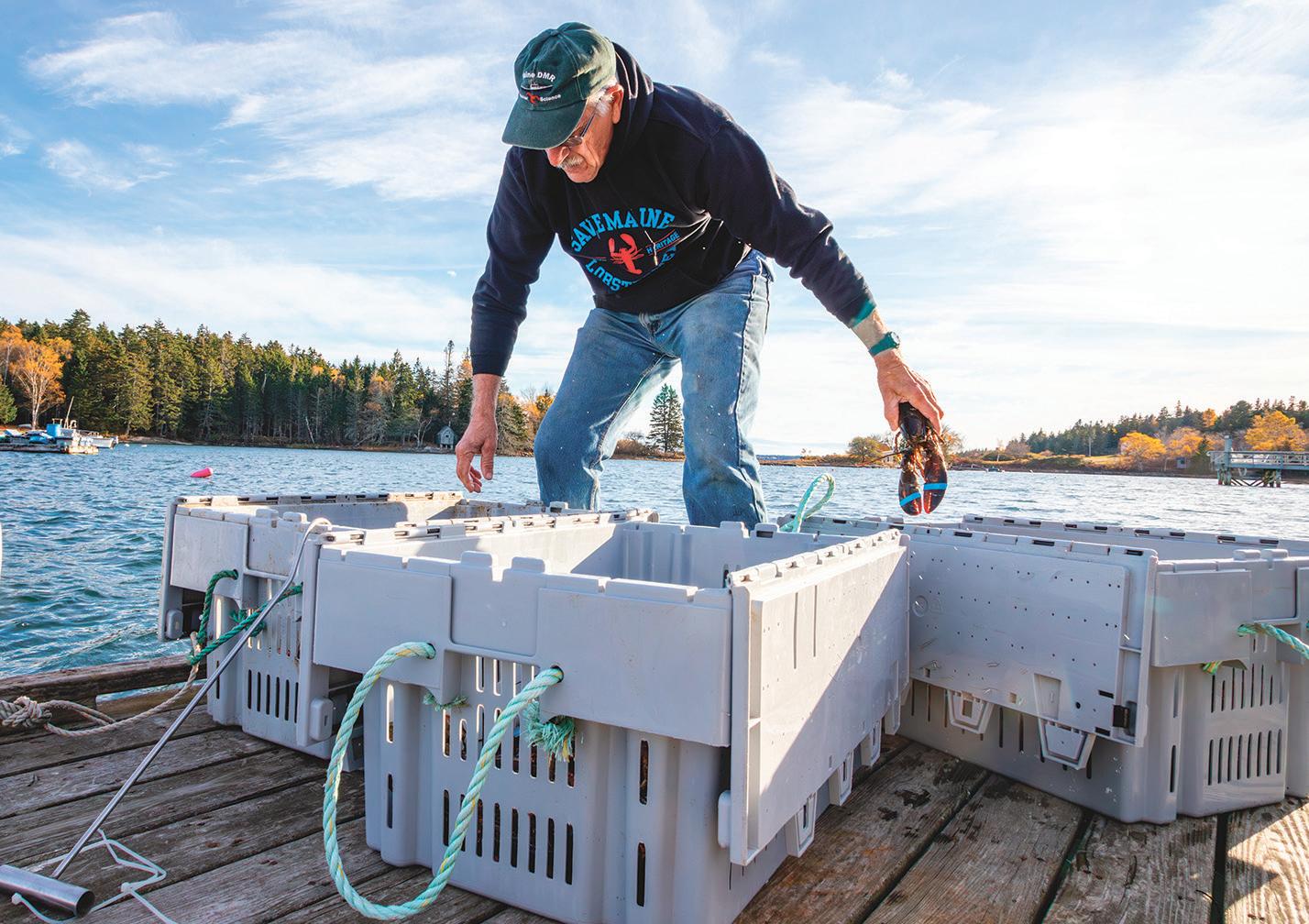
able to do it right here, and know that it’s on land. Then I could assess what was wrong, and how to go about fixing it.”
Soon, that could change: Cushing is in the early stages of an ambitious plan to buy two waterfront
parcels that would eventually become a public launch for commercial and recreational boaters. If the project goes ahead, it would provide a reliable new option for reaching the water in the town, where
Rising seas require long-term planning, experts warn Maine conference explores accelerating
BY CLARKE CANFIELD
Sea level rise will accelerate in the decades ahead, and coastal communities should act now to assess risks and identify solutions for
sea level rise
the long term—generations or even a century or more into the future.
That was the message delivered by the keynote speaker at the fourth annual SOS Saco Bay Coastal Conference on October 7.
Cameron Wake, director of the University of New England’s Center for North Atlantic Studies, told attendees that the ocean level has risen about 8 inches in Portland Harbor since 1912. By 2100, the level is projected to rise even more, from 1.6 feet on the low end to close to 9 feet on the high end, Wake said.
When looking ahead, people along Maine’s coast should imagine what their communities might look like with 10 feet of sea level rise, he said. Under that scenario, people should ask themselves: What does a resilient coastal community look like? What does a working waterfront look like? What does access to the ocean look like?
“At any given dock there’s likely to be more water in terms of depth in the future.”
residents can be in their homes for as long as possible, we need to prepare for the inevitable, which is many feet of sea level rise in the future that’s going to require an entirely different response,” Wake said after his presentation.
“I understand there are the near-term challenges that are going to occupy people’s attention, but we need to start inserting in those discussions the longer-term challenges, which I think are going to require a transformation of the way we think of the coast and build on the coast and live on the coast.”
Save Our Shores (SOS) Saco Bay is a nonprofit advocacy group that works to preserve and restore the shoreline along Saco Bay. Close to 200 people attended this continued on page 5
“Even given the enormous challenges of protecting our coastal areas so our continued on page 5


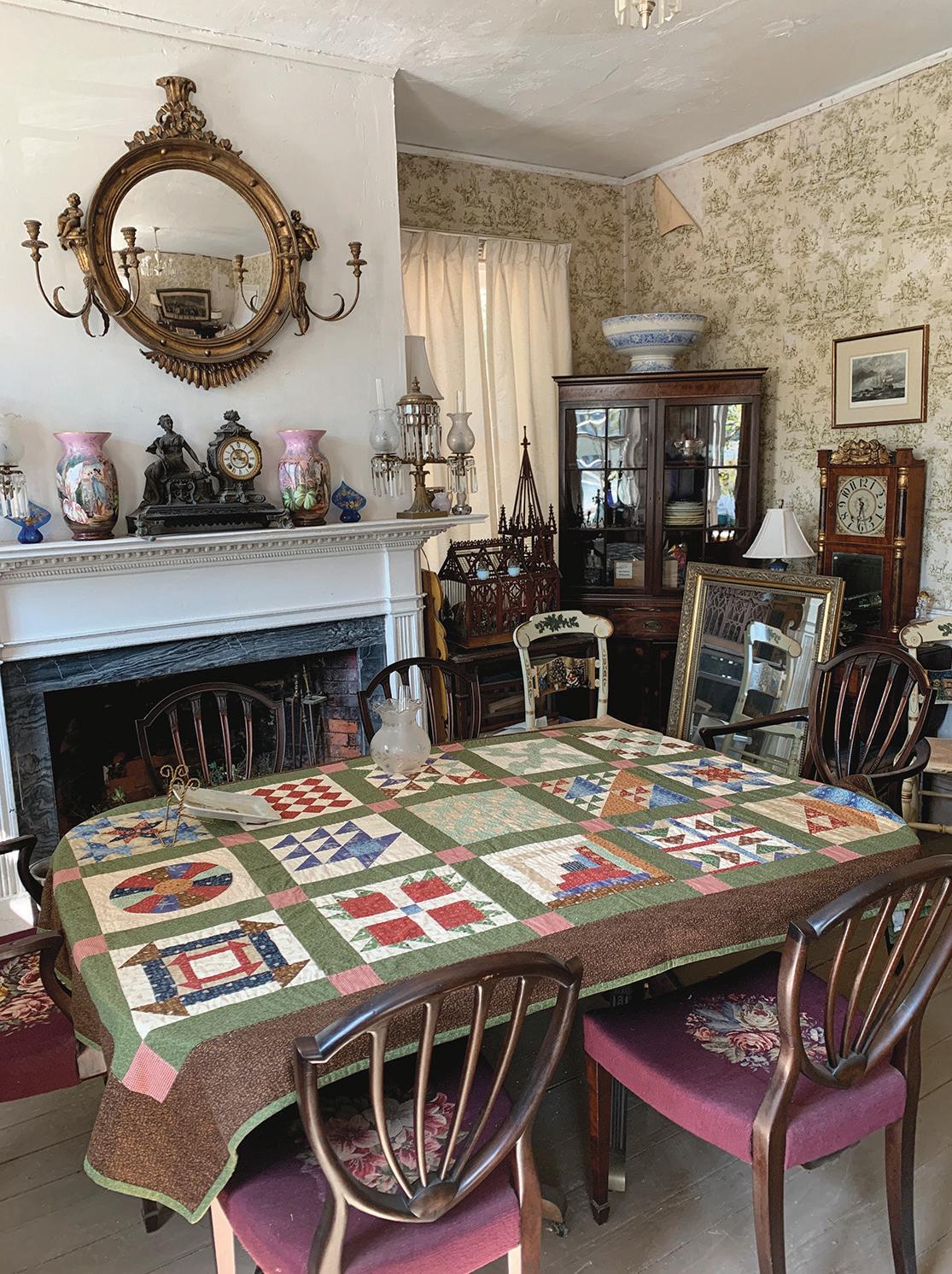
Historic Eastport mansion restored to new life Underground railroad, Land Claims Act tied to house
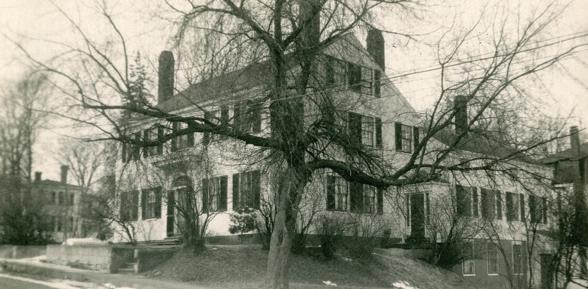
BY LURA JACKSON
One of Eastport’s behemothic houses—a remnant of the port’s mercantile legacy— has been saved from demolition. Beyond its historic value, the Isaac Hobbs mansion carries a vital connection to stories much larger than its own. One of the last stops on the Underground Railroad and the former home of Don Gellers, an attorney who worked on the Indian Land Claims case, the house has long been associated with society’s underserved.
“It was more a passion decision than a prudent one,” said James Pollowitz, who with his husband Bruce Ellis bought the house three years ago after moving from Connecticut to Cutler. “I was especially looking for a project that could preserve history, and a house that was most at risk.”
Having endured seven decades of neglect, the Hobbs house had a standing order for its attached carriage house to be demolished. It fit the bill perfectly for Pollowitz, who saw value in the property beyond its 10,000 square feet.
The house dates to 1816 when Isaac Hobbs, a carpenter who ran a mercantile business with his brother George, built the first story of the west wing. As Hobbs found success, he worked on expanding the dwelling, adding its Federalist body in 1823. Merchant Samuel Witherell bought the house in 1846
and added the east wing and a second story to the west wing in 1849.
Once purchased, the house required rapid triage.
“The east wing was really in the most critical shape,” said Pollowitz, noting it was near “imminent collapse” with three sides of its brick foundation exposed. After some searching, they were able to find a carpenter able to dig out the foundation and build a cement retaining wall.
In the meantime, the west wing—which was in equally bad condition but had a stable foundation— was converted into livable quarters with running water, electricity, and heat. In total, the house has 25 rooms, all with 10-foot ceilings, along with eight staircases and nine fireplaces.
Walking into the house today creates an impression of timeless opulence lent by the high ceilings and immaculate restoration work in the finished kitchen, dining areas, and parlor rooms, each of which are fully furnished with museum-quality antiques—a sensation put into quick juxtaposition by the as-yet unfinished portions that remain wrought by time.
While the house was made to showcase wealth, not every room was designed to that effect. Deep in the basement behind a chimney rests a small cubby about six foot long and four feet wide. Hidden by a sliding cloth, the cubby could hold two or three people—former slaves on their way to find freedom in Canada.
“They knew exactly where his bedroom was, went there and ‘found’ six marijuana cigarettes,” Pollowitz said.
At the time, it was enough for Gellers to be disbarred and charged with a felony. He contested it, but to no avail, and eventually emigrated to Israel. After his death in 2014, Gov. Janet Mills reopened his case, and Gellers subsequently was awarded the state’s first posthumous pardon. Recognizing the importance of Gellers’ work, Pollowitz and Ellis donated the desk to the Passamaquoddy’s Sipayik Museum.
While some items have left the house, many more have since come in. Most are from Pollowitz’s collection, assembled over the years from museums and historic homes. Some incoming pieces were gifts donated by the house’s fanbase, represented in part by a 4,500-member Facebook group.
In total, the house has 25 rooms, all with 10-foot ceilings, along with eight staircases and nine fireplaces.
One such gift was a quilt that would have been hung from a window to signify the house was a safe place during the days of the Underground Railroad. Another gift came from a terminally-ill woman from the Midwest who came to Eastport to bring a toy chest built by Hobbs’ great-great-great nephew. It now sits in the restored tack room near a display case of horsemanship medals from another donor. Other gifts include two stunning chandeliers, one Venetian and one Napoleonic.
The restoration has uncovered occasional treasures, including Don Gellers’ rolltop oak desk. Gellers, who worked as a representative for the Passamaquoddy tribe, reportedly endured harassment culminating in a raid by the Maine State Police directly after filing the land claims suit.
“The members of the Hobbs page have been my greatest wellspring of support and encouragement,” Pollowitz said. Many see the restoration of the mansion as inspirational for their own projects.
The restoration process, now about 60% complete, hasn’t been without its challenges.


“This is the epitome of a money pit,” Pollowitz said, though he refrained from estimating its cost. One problem is insurance, with several factors weighing against the house, including its coastal location and its condition. For the time being, it’s under contractor insurance, though Pollowitz hopes to expand the policy down the road.
He has been able to save money by learning to do some restoration himself—notably the original windows. “It’s very laborious, but it also saves a tremendous amount of money for other parts of the restoration.”
The largest remaining block to be restored is the east wing, which will house an upstairs library and

additional bedrooms. Electrifying the bedrooms and restoring the fireplaces to working order will come in the future, further increasing the building’s livability.
The goal is to open the house for tours and events, with Pollowitz noting that around 100 guests recently came for a tour during the Salmon & Seafood Festival.
Based on the favorable response, a traditional Christmas event is planned for Dec. 13, complete with carolers in period dress.
The restoration has been acclaimed by local residents, including Hugh French, director of the Tides Institute & Museum of Art.
“The Hobbs house is an extremely important building to Eastport’s unique historic architectural heritage,”
French said, describing it as the “finest example” of a Federalist home and noting that it possesses the last Federalist period carriage house on the island.
“It could easily have been lost. What Jim Pollowitz and Bruce Ellis have done to save the house at a critical moment and make enormous strides in restoring it is extraordinary.”
Pollowitz feels good about his contribution to Eastport.
“It’s just a wonderful thing to be able to present this to the community, a house that was shuttered and abandoned for so long, to bring it into its former glory, and to have people so excited to see it and how it’s all been redone.”




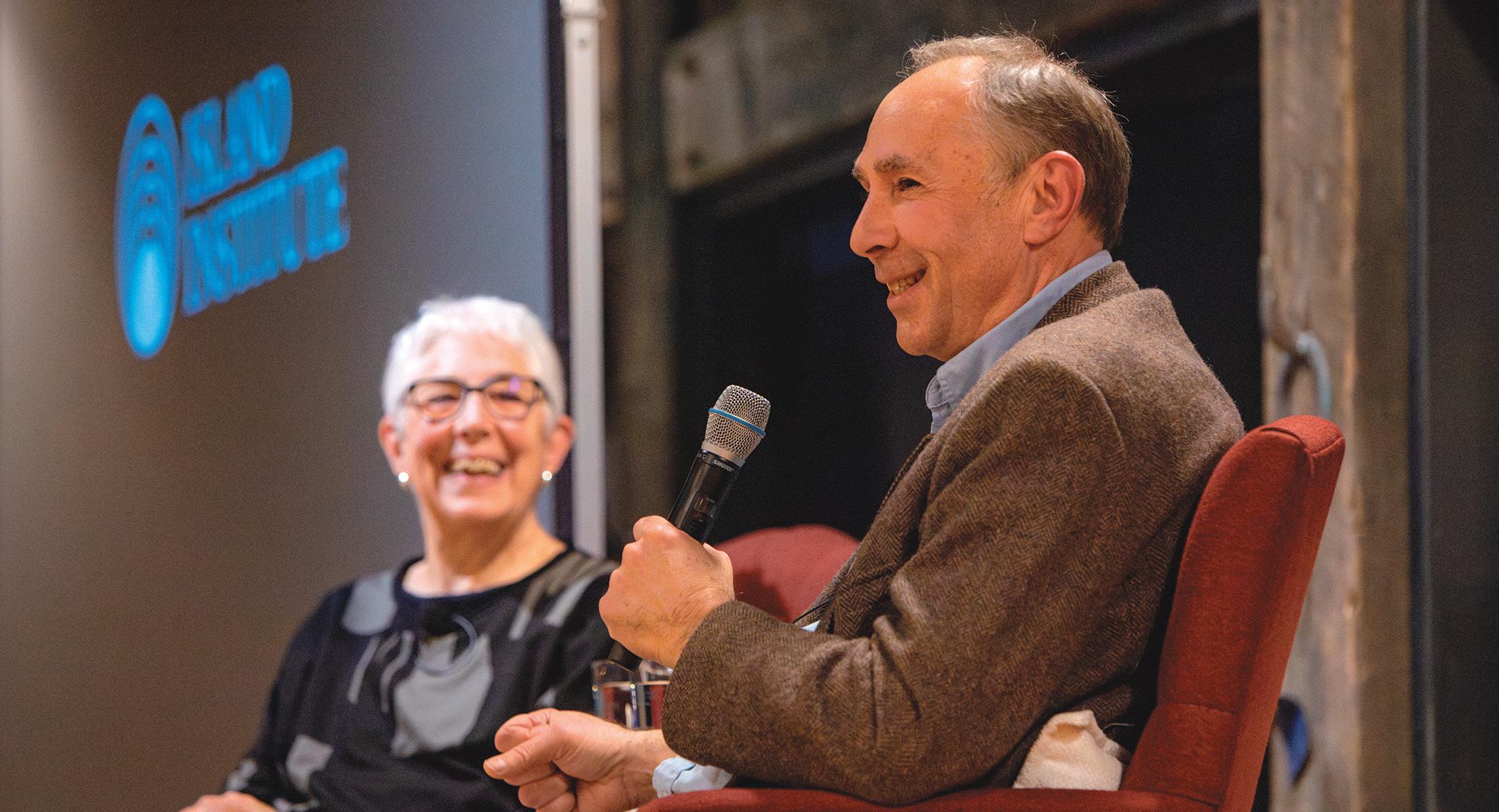
The state of local journalism
A send-off for retiring Island Institute editor Tom Groening
BY CHARLES EICHACKER
An Oct. 30 event honoring Tom Groening, the retiring editor of The Working Waterfront and Island Journal, was as much a toast to his own career as it was an uneasy reflection on the important but precarious role journalism plays in the world.
The event opened with remarks by Colin Woodard, an author and journalist who began his career as a foreign correspondent in Eastern Europe and the Balkans around the collapse of the Soviet Union before returning to the U.S. and writing for publications including The Working Waterfront and Portland Press Herald.
The program then featured a conversation between Robin Alden, the founder of Commercial Fisheries News and a former commissioner of Maine’s Department of Marine Resources, and Groening, who spent years at local Maine newspapers before coming to Island Institute slightly over a decade ago.
While the journalism industry faces real threats, all three speakers argued that it remains a force for good that can do everything from informing citizens in struggling democracies, to presenting the science behind different industries, to simply marking community milestones such as births, deaths, and which kids made the dean’s list.
show up in the paper, and then you do an interview with them, and you profile them, and you know, you listen and you really hear their story and what they’re about. That feels good.”
Groening got laughs when he recalled a reaction he once received to an editorial piece he’d written for the Republican Journal in Belfast, now part of the Midcoast Villager, endorsing a slate of candidates for City Council.
“Someone came up to me, I won’t mention his name, and said ‘Thank you for writing that. I take that into the ballot booth and I go opposite every one of them,’” Groening said.
Alden recalled starting Commercial Fisheries News while living in the Stonington area 53 years ago, based on her belief that commercial fishing, when done properly, can support the environment and help communities to thrive. The idea came after she overheard an argument between an oceanographer and a shrimp fisherman.
“ You can rebuild journalism from the ground up and people are doing it, you know, nimble online newsrooms.”
Some 150 people attended the event, which took place at Bayview Point Event Center in Belfast and was titled “Trust in Community Journalism.”
At one point, the presenters were asked what they’re most passionate about in journalism.
Groening named several things, including analysis pieces that go deeper to explain the stakes behind different stories, as opposed to “stack[ing] up facts” and leaving readers to “figure it out.”
On a simpler level, Groening said he likes getting to write about ordinary people who “never would
“They both knew what they were talking about, and they could not hear each other,” she said. “… I saw that what was missing was connecting everybody’s different types of knowledge and building understanding.”
On a more wistful note, Alden told the crowd that Commercial Fisheries News would be publishing its final issue in December.
Woodard, who now runs the Nationhood Lab at Salve Regina University’s Pell Center in Rhode Island, painted a dire picture of the news industry.
“I guess you would call my talk ‘the fall of journalism and what we might do to rebuild it,’” he said at the start of his remarks.
After growing up in Maine, Woodard started his journalism career as a foreign correspondent before moving back to the U.S. and shifting
to national and state reporting. He noted that changes in the journalism industry have forced many newspapers to eliminate all those types of positions. Among the challenges have been the growing availability of classifieds and other information online, and new owners and investors who have slashed what they see as the least profitable parts of news organizations.
The result has been once-robust regional papers that now put out a fraction of the original reporting they once did and instead rely more on contributed material from wire services such as AP.
“And as these papers disappear, and then other entities, broadcast media, radio, 60 Minutes, you know, all vanishing very rapidly,” Woodard said. “So that’s a terrible thing for democracy.”
But Woodard and the other speakers also pointed to new business models—many of them nonprofit organizations such as The Maine Monitor, Harpswell Anchor and Peaks Island News—that could help fill the growing gaps in traditional reporting. The Monitor, for example, has just launched a local reporting initiative that’s covering rural western and Downeast Maine.
“You can rebuild journalism from the ground up and people are doing it, you know, nimble online newsrooms,” Woodard said.
During a question-and-answer session, Jo Easton, director of development at the Bangor Daily News, offered a hopeful assessment for the local news landscape in Maine and said colleges and universities here could follow those in other parts of the country that have enlisted student journalists to plug reporting gaps.
In Groening’s last column as the editor of The Working Waterfront, Groening expressed his admiration for two of the nation’s best-known journalists: Bob Woodward and Superman.
To that end, Island Institute President Kim Hamilton concluded the Belfast event by presenting Groening with a gift: his own version of the Man of Steel’s red-and-yellow cape.
WORKING WATERFRONT
continued from page 1
roughly 70 local fishermen together catch more than 2 million pounds of seafood each year. It would also give community members a local spot for putting in their watercraft and help the town better handle emergencies on nearby islands.
While Cushing is unique among Midcoast fishing towns in lacking a public boat ramp, its efforts to create one can offer lessons for many other communities along Maine’s coast that have struggled to protect their working waterfronts from worsening storms, competition from land developers, and other challenges that have accelerated in recent years.
Two decades ago, the Island Institute put out a landmark report that found just 20 miles of Maine’s 5,500 miles of shore were still being used for fishing, aquaculture, or other marine businesses.
It was around the time of that report that Cushing made its own decision that, years later, could allow it to take the unusual step of reinforcing Maine’s working waterfronts.
At the time, Staples was serving as the local harbormaster, and he found it unusual that a peninsular town with miles of shore didn’t have its own public landing. He also was paying boat excise taxes and proposed that the town save up a portion of that combined revenue for the purpose of improving public access to the water.
Good Neighbors Park, but that area is too shallow for anything but clamming, kayaking, or similar uses.
Five or six years ago, Staples—who has also been on the Select Board and other local committees—learned that a family might be willing to sell a waterfront property in South Cushing that had once been used by a local lobsterman, but that opportunity vanished as the property was sold on the private market.
Fearing a similar outcome, officials are now pouncing on the chance to obtain a separate property that also once belonged to a fisherman, but who has passed away and whose family is now negotiating a sale to the town.
“I needed to be hauled out ASAP.
The Select Board has approved a preliminary agreement to buy the property, which takes up two adjacent parcels on Barnacle Lane and includes an aging pier that sticks out into Pleasant Point Gut—just a stone’s throw from Staples’ own wharf—as well as an old home and some sheds.
It would have been awful nice, and awful secure, to be able to do it right here.”
Local officials sent the idea to voters, who approved it, and since then the town has annually transferred between $10,000 and $15,000 into the water access account, which now has about $340,000.
Even with that money, it hasn’t been easy for the town to go ahead with its original vision for improving access to the water. In 2017, the community did accept a gift of 15 acres along the water which is now
RISING SEAS
continued from page 1
year’s conference, including municipal and state planners, representatives from nonprofit organizations, college students, and members of the public.
The all-day event at the Ferry Beach Retreat & Conference Center featured classroom sessions, a trade show, and outdoor field stations on the beach. One track focused on coastal resilience, particularly in the face of rising oceans.
Sea levels are on the rise primarily due to increased global carbon dioxide emissions that have warmed the planet, and the melting of massive ice sheets and glaciers in Greenland and Antarctica, Wake said.
The combination of rising seas and a warming climate has made Maine susceptible to more frequent coastal flooding. That vulnerability was fully exposed in January 2024 when two vicious storms in four days caused widespread destruction and damage from Kittery to Eastport. They destroyed fishing wharves, damaged and flooded oceanside homes, swamped neighborhoods, demolished roadways, eroded beaches, and swept old fishing shacks and other structures out to sea.
In the wake of those storms, one of the pressing concerns has been the impact to the state’s working waterfronts, which fishermen and other commercial interests rely on for their livelihoods.
The town would buy the site for an estimated $730,000, with half coming from its savings and the rest from the Land for Maine’s Future Program. The board of that state program tentatively approved the funding at its September meeting, but the town must meet several conditions to receive it, including getting a new survey and appraisal and holding a local vote that’s likely to take place in early 2026, according to current Harbormaster Austin Donaghy.
Eventually, officials hope to remove the pier and home and rebuild the site with a boat ramp and floating dock. That work would require additional funding and at least two or three more years of work.
In addition to providing access to fishermen, Donaghy noted that the project would also help
local property owners put recreational vessels into the water. And it would give the town somewhere to store its own boat and better coordinate the response to medical emergencies or fires. Staples noted that one blaze burned for several days on Gay Island, which is just across the harbor from his wharf and includes several homes.
If the town can complete the project, it’ll represent a small but significant victory for Maine’s working waterfronts, which are critical access points for the fishing and aquaculture businesses that land hundreds of millions of dollars’ worth of seafood each year.
Those properties have been threatened by worsening storms, like the ones that battered Maine’s coast two winters ago. It has also been hard for private wharf owners to hold onto their property given the growing demand for housing on Maine’s coast.
Several things came together to help Cushing with its own project. It took foresight for the town to start saving up money years ago, as well as the additional pledge of money from the Land for Maine’s Future Program, which provides grants for water access and working waterfront protection.
Olivia Richards, a community development officer at Island Institute’s Center for Marine Economy, helped the town seek the LMF funding.
“Working waterfronts are critical for Maine because if these access points didn’t exist, people couldn’t get onto the water,” Richards said. “It’s as simple as that. We need wharves. We need these access points in order for the marine economy to flourish and thrive.”
Both Staples and Donaghy also praised the owners of the property on Barnacle Lane for entertaining the town’s offer, when they could likely get more for the prime shorefront land on the private market.
“There’s very little working waterfront left,” Staples said. “If you pass up opportunities like this, they don’t come around weekly, monthly, or yearly.”
Coastal towns have a variety of strategic approaches at their disposal to help them transition or transform in response to the threat of sea level rise and increasingly violent storms. Those strategies, outlined during a panel discussion on coastal resilience, are:
• Protecting (keeping water away from homes)
• Accommodating (elevating buildings and infrastructure to allow higher water to pass through)
• Avoiding (preventing new development in hazardous areas)
• And retreating (removing or relocating critical infrastructure away from danger)
The panel discussed whether some sort of property buyout program would be appropriate for Maine to purchase homes that have been damaged by or are at risk from coastal storms. Similar programs have been implemented elsewhere in the country, but there are many questions about whether buyouts should be considered in Maine.
It’s important that any decisions on buyout programs—and the cultural, economic, and social implications of such programs—should come from community members themselves, panelists said.
“This is not a strategy that should be done top down,” said panel moderator Jessica Brunacini, a coastal resilience expert at the Wells National Estuarine Reserve.
During a presentation on communicating the impact of Maine’s changing climate, News Center Maine meteorologist Ryan Breton said plenty of people were climate change skeptics a decade ago. But nowadays, he said, people he talks to are more interested in learning how the changing climate is affecting the weather rather than expressing doubts about climate change.
It’s uncertain exactly how fast sea levels will rise in the future, and it’s hard to say how towns will transform in response to higher oceans, Wake said. Some places will have to explore bold measures around housing, flexible infrastructure, and ocean access.
At the same time, rising sea levels might open up new opportunities for Maine’s working waterfronts, he added.
“The opportunity I see is there’s going to be more water,” Wake said. “How we address that opportunity I think is a discussion we want to open up. I don’t have the answers, but at any given dock there’s likely to be more water in terms of depth in the future. The challenge is going to be do we build higher docks? Do we build higher wharves? How do we get people to and from the waterfront? Where do people live and work along the waterfront?
“There are a lot of challenges, but I also think along the way there might be some new opportunities.”

Maine’s new jobs need a waterfront
Understanding its role makes case for protection
BY KIM HAMILTON
I’M FASCINATED by working waterfronts—those extraordinary places along the Maine coast that link coastal communities to global trade, connect people to the ocean and good food to our tables, and provide a window onto our heritage and our future.
These places also happen to be endangered.
Here’s the problem: capturing public attention, investments, appreciation, and awe for the working waterfront is surprisingly challenging. It’s not cuddly. On its best days, it’s busy, fishy, and filled with the noise of livelihoods in the making. In a howling storm, it’s undeniably dangerous.
A friend recently suggested we need our own approachable, well-known animal as a symbol of our hopes and dreams for the working waterfront. Think of the dolphin, monarch butterfly, or bald eagle—creatures that encourage people to open their minds and wallets.
Many would say we already have that powerful messenger: the lobster. It is iconic—our own charismatic, aquatic arthropod with its lovely carapace,
sensitive antennae, and powerful crusher and pincer claws. It says that the working waterfront matters.
But, despite the persuasive power of the lobster, Maine’s working waterfronts continue to disappear.
For personal reasons, my thoughts go toward the people whose lives center on the working waterfront and those whose careers expand from there. The fishermen and sternmen, yes, but also the oyster and scallop farmers, chefs, food processors, pilot boat captains, gear manufacturers, boat builders, and more. These are the faces of today’s maritime economy.
I’m biased, though. Not because I don’t love lobster—I do. But because my now 96-yearold father spent his career working on a pier, and I had a close-up view. It was the place where he once docked a ship in a nor’easter when the wind chill factor was 60 below. As he told me matter-of-factly, “You can’t change shipping because the weather is bad.”
Earning a community’s trust Introducing the new editor sweetest in the gale from the helm
BY CHARLES EICHACKER
I’M NOT FROM Maine, but I’ve talked to many people since I got here.
There are other ways I could open this piece, to introduce myself as the new editor of The Working Waterfront and Island Journal.
But as I try to fill the big boots left by outgoing editor Tom Groening, I think it best to start with the obvious: I’m not from here.
Although I grew up in Maryland— another state known for its clawed seafood—I’ve never lived on an island or worked on a boat. Hand me a fishing rod, and I’d likely cast it twice before needing you to untangle the line.
What I have done is spent 11 years working as a journalist in Maine, getting other people to talk to me. They’re the ones who have given me credibility to take this role.
So I’d like to start with them.
I’d like to start with Bruce Campbell. In the fall of 2014, I was less than a year into covering the town of Bucksport for The Ellsworth American when Verso Paper announced that it was closing the local mill and laying off more than 500.
With several days to go until our print deadline, my editor tasked me with interviewing as many workers as I could,
That pier was a global crossroads, with ships carrying crews from Venezuela, Norway, India, Aruba, and beyond. The team docked ships 24 hours a day, seven days a week, depending on the tides.
It was demanding, carefully practiced work. Three men forward and three men aft would take the heavy, manila rope from the ship and hook it to the bollards. And they were just getting started.
Capturing public attention, investments, appreciation, and awe for the working waterfront is surprisingly challenging.
More personally, the working waterfront put me through college. Without my father’s job, combined with my mother’s, the likelihood of higher education would have been greatly diminished for me and my brother. I am grateful for working waterfront jobs and what they make possible.
I asked my father recently what would happen if the working waterfront disappeared. He paused for a moment and said, “You’d lose a lot
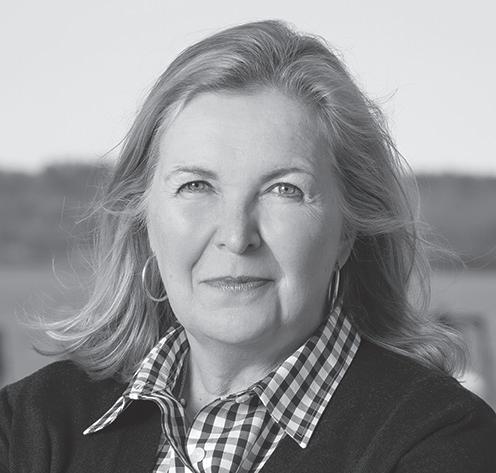
of jobs and income. Activities would shift to another port. If you lose all of those, you’ve lost a way of life.” Then he thought a little more and added: “You need the waterfront to sustain life.”
There it is. An essential kernel of truth: our working waterfronts sustain life and sustain livelihoods.
This is why Island Institute has launched a new Working Waterfront Fund to support our work with communities to protect shoreside access, strengthen the infrastructure that underpins the last 20 miles of working waterfront shoreline, invest in renewable energy solutions, and build new and necessary skills.
It’s a big bet, and it’s also deeply personal to me. In my father’s words, “It’s the waterfront. It’s where it all happens.” But we need to fight to keep it that way. Please join us.
Kim Hamilton is president of Island Institute, publisher of The Working Waterfront. She may be contacted at khamilton@islandinstitute.org.
so that we could show how this would affect them and what was being lost. At that stage in my career, I didn’t immediately know how to go about finding the workers or convincing them to talk to me, especially at the very moment their lives were getting upended.
Finally it occurred to me to try the local bar. That’s where I found 64-yearold Campbell.
A flannel-shirted union electrician with more than 40 years at the mill, Campbell quickly noted that he was lucky to already be near retirement.
He described the highlights of his own career—enough money to put his daughter through Colby College, a better payout at the end—and lamented that his younger colleagues wouldn’t get to enjoy the same.
I had been to Maine previously, but the first time was on a childhood vacation to the Midcoast, and the second was when my own parents put me through Colby College.
Now, as I take over a newspaper that aims to reflect how people live along Maine’s more than 5,000 miles of coast, what I can say is that I’ve spent years getting hundreds of other people to trust me with their stories.
What I can say is that I’ve spent years getting hundreds of other people to trust me with their stories.
He argued that the U.S. pulp and paper industry couldn’t compete with the low wages or government support of mills in other countries. His take: “We’re right between a rock and a hard place.”
By that point in my life, I didn’t have much firsthand experience with the hard places of the world.
After the Ellsworth American, I moved on to daily reporting at the Kennebec Journal and Bangor Daily News, then digital and radio reporting at Maine Public.
Most recently, I was the coastal and state editor at the BDN
Many of the stories that my colleagues and I have written have been about hardships on and off the water, from health threats to housing insecurity to storms that have sunk ships and destroyed property.
But as readers of this publication know, there is more to journalism than just describing the problems. It can also identify solutions. It can highlight

the history, science, and culture of a region. It can entertain and distract. Its photos can capture more than words. I’m eager to continue in that tradition. The task feels daunting, in part because The Working Waterfront and Island Journal have offered all these things and more under Tom’s leadership. On top of putting out a paper and magazine, we’ll also need to find new ways to reach readers who get most of their information on smartphones and social media.
As I figure those things out, I won’t forget to keep earning the trust of this community.
Charles Eichacker is the new editor of The Working Waterfront and Island Journal. He may be contacted at ceichacker@islandinstitute.org. He has named his column “Sweetest in the Gale” after a line in the Emily Dickinson poem “‘Hope’ is the thing with feathers,” which uses a bird in a storm to represent hope in dark times.
ROOFTOP VIEW —
This unusual perspective on downtown Boothbay Harbor with the harbor itself in view at the top of the image was shot in August of 1939 by Herbert Mayer. Do readers know anything about Mayer and his connection to Maine? An internet search suggests he photographed for the U.S. government, but we can’t confirm that. If you can share any information, contact editor Charlie Eichacker at ceichacker@islandinstitute.org.

the public’s policy
Advancing Maine’s blue economy
A task force charts a path for growth
BY NICK BATTISTA
MANY MAINE communities have a strong tradition of fishing, boatbuilding, or people otherwise using the Gulf of Maine to support their families. Building on that strong heritage, the state has attracted scientists and researchers who study the ocean as well as inventors pioneering equipment to support this work. From using lobster or kelp as an ingredient in skin care, to developing software to support aquaculture farms or collect data for research, entrepreneurs are developing businesses in and adjacent to these sectors.
In 2024, lawmakers saw the need for Maine to take a more proactive approach to supporting this growth and innovation. They established a task force to study how to “support Maine’s emergence as a center for blue economy innovation and opportunity in the 21st century.” The charge included developing a definition of Maine’s “blue economy,” reviewing how other states and countries approach this investment, and identifying parts of Maine’s blue economy that could benefit from more economic development attention.
Island Institute Board of Trustees
Doug Henderson, Chair
John Conley, Vice-Chair
Bryan Lewis, Secretary, Chair of Philanthropy and Communications Committee
Katherine Vogt, Treasurer, Chair of Finance Committee
Michael Boyd, Clerk
Shey Conover, Chair of Programs Committee
Michael Sant, Chair of Governance Committee
Robert Baines
Pamela Baker-Masson
Sebastian Belle
Des Fitzgerald
Christie Hallowell
Kristin Howard
Nadia Rosenthal
Michael Steinharter
Carol White
John Bird (honorary)
Tom Glenn (honorary)
Joe Higdon (honorary)
Bobbie Sweet (honorary)
Kimberly A. Hamilton, PhD (ex officio)
The task force focused on sectors that had received lower amounts of statewide attention and didn’t have something like a strategy, plan, or roadmap. For example, the fishing and seafood economy has already been deeply analyzed through an industry-led initiative called the Seafood Economic Accelerator for Maine, or SEAMaine.
The blue economy task force identified five areas that are primed for innovation and growth: marine research and ocean data; marine biotechnology; marine vegetation; resilient coastal infrastructure; and maritime propulsion systems and sustainable boatbuilding.
Other states like Rhode Island and Washington have created focused economic development plans in specific areas of the blue economy, which has helped them attract significant public and private funds. Canada, Norway, Belgium, Korea, and other countries also have some version of a center focused on the blue economy, or an “ocean cluster,” that supports economic development and serves as a hub for businesses, investors, and others.
One of the Maine task force’s recommendations was for the Legislature to establish a similar Center for the
Blue Economy to serve as a central, coordinating hub of information and resources. Another was to better understand the education and workforce training programs to support Maine’s evolving ocean economy as well as the needs and challenges for these sectors.
Last spring, the Legislature formed a second Blue Economy Task Force to make recommendations for tackling these two areas. This work started in earnest late this summer with more than 35 participants. The process moved quickly—with a report due back to the Department of Economic and Community Development and the Legislature in early December.
As the co-chair of this task force, I have had the pleasure of hearing from numerous businesses in the five sectors about their needs for better support and coordination. I have also heard from many of Maine’s research and higher education institutions who work in these areas about how important strong state leadership is to pulling together different interests. A modest state investment in creating a Center for the Blue Economy can help ensure Maine has the leadership to compete with other states and the coordination
THE WORKING WATERFRONT
Published by Island Institute, a non-profit organization that boldly navigates climate and economic change with island and coastal communities to expand opportunities and deliver solutions.
All members of Island Institute and residents of Maine island communities receive monthly mail delivery of The Working Waterfront. For home delivery: Join Island Institute by calling our office at (207) 594-9209 E-mail us: membership@islandinstitute.org • Visit us online: giving.islandinstitute.org

and knowledge to better tap the growth potential of these sectors.
It is also clear that while there are numerous programs available to develop and support the workforce in some of these sectors, the state would benefit from better understanding the needs of two which are growing and need additional focus: resilient coastal infrastructure, and maritime propulsion systems and sustainable boatbuilding.
As the task force wraps up its work, I am grateful for the deep thinking from its members—many of whom could have spent that time working on businesses—as well as to the consultants who collected and analyzed a significant volume of information and thoughts that became the report. As with all good ideas, creating the center and delivering on the workforce recommendations will take money—I look forward to those conversations in the coming months.
Nick Battista is chief policy and external affairs officer for Island Institute, publisher of The Working Waterfront. He may be contacted at nbattista@islandinstitute.org
EDITOR: Charles Eichacker ceichacker@islandinstitute.org
Our advertisers reach 50,000+ readers who care about the coast of Maine. Free distribution from Kittery to Lubec and mailed directly to islanders and members of Island Institute, and distributed monthly to Portland Press Herald and Bangor Daily News subscribers.
To Advertise Contact: Dave Jackson djackson@islandinstitute.org (207) 542-5801
www.WorkingWaterfront.com
guest column
Remembering Susan Jones: A guiding light
Her editorial leadership helped sustain a voice
BY ROBIN ALDEN
THE MAINE FISHING industry lost a guiding light when Susan Jones passed away in early September in Stonington at the age of 78. Her leadership shaped the fishermen’s newspaper, Commercial Fisheries News (CFN), for 40 years, from the early 1980s until her retirement in 2014, during which it was the paper of record for the New England fishing industry.
When Susan was named editor of CFN in 1988, I wrote an editorial noting that she had already improved the paper’s look and readability, tightened its content, and added features such as market reports and profiles of fishermen.
“Throughout, her accuracy and fairness have been evident. Commercial Fisheries News can only get better under her direction.”
Indeed, accuracy and fairness were the hallmark of her work. CFN is a trade publication with a very targeted audience. But Susan’s work ethic, her incisive questions, and her attention to detail would have been valued at any major publication.
Susan and I first met in 1972 when I interviewed her about clamming for the local Stonington paper. That interview was the start of our friendship. That story was also the start of CFN.
Listening to what clam diggers knew about the flats and their frustration with state management was one of the sparks for CFN: a place to share fishermen’s knowledge, and that of scientists and agency people, so that Maine fishermen could fish forever.
From then on, Susan and I were friends and shared our belief in CFN. Indeed, her talents and our shared purpose made it possible for me to leave the paper and pursue other ways to bring that vision for Maine’s fisheries to reality.
Susan built a team of writers, particularly Lorelei Stevens and Janice Plante. They were young when they started and remember how Susan’s patience, kindness, and high standards nurtured and inspired their development.
Plante, who went on to be the public information officer for the New England Fishery Management Council, remembers working with Susan after the U.S./Canada Hague Line decision
in 1984. Susan was wrestling with CFN’s coverage of the monumental decision’s impacts, as they related to Gulf of Maine groundfish fishermen and those who fished on Georges Bank.
Plante said that late-night session epitomized who Susan was, how much she cared about fishermen and their families, and how much she wanted fishing communities to thrive.
It takes more than writers and graphics to make a newspaper, and Susan understood the need for advertising. She knew many of the advertisers and saw them as part of the community that made CFN. She nurtured the creativity and hard work of a young Brian Robbins—something readers have felt directly since he took on the editorial role at CFN (as well as everything else) in the last 12 years.
Before CFN, Susan was secretary of the Maine Lobstermen’s Association (MLA) and worked with then-MLA President Ed Blackmore on the Sternman Project, helping pass a 1976 federal law that exempts fishermen from paying employment taxes for their sternmen. She also worked with him to secure the Stonington Fish Pier.
All the while, Susan was a fisherman’s wife, a mother, grandmother, and great-grandmother. She and her husband, Donald, were a team throughout.
Susan was my dear friend. For 50 years we shared a vision for Maine’s fisheries as a place where regular people can make a good living, using their smarts, using the ocean so that generations to come can still fish from their harbors. She carried CFN for years and brought its mission to life.
Those who knew and worked with Susan are filled with gratitude for this kind, smart, principled, and strong woman who has made such a difference for fishing on the Maine coast and in our lives.
Robin Alden is founder and former editor and publisher of Commercial Fisheries News. She was commissioner of Marine Resources in the Gov. Angus King administration. She is collecting memories of Susan to share with her family. Please send them to: robin.alden3@gmail.com
Tourism office reports longer stays
Canadians visited in greater numbers than expected
THE MAINE OFFICE of Tourism released its summer visitor tracking report which includes data collected May 1 through August 31.
The report shows the number of overall visitors to Maine this summer decreased by 6% compared to 2024, but the total number of days spent in Maine by these visitors was nearly unchanged compared to 2024. The length of stay increased with 34% of visitors staying five nights or more, underscoring Maine’s enduring appeal as a destination where travelers spend time exploring beyond a single stop.
Another positive indicator is a stronger-than-projected number of tourist visitors to Maine from Canada this summer, following extensive outreach from Gov. Janet Mills to welcome Canadian visitors amid heightened political tensions. Following early season concerns, the share of total Maine visitors originating from Canada this summer was 4%, down from 7% in 2024.
For the summer season, Mills created signs for Maine businesses and border crossings to welcome Canadian visitors and traveled on a goodwill mission to New Brunswick and Nova Scotia.
The report also showed 97% of visitors would recommend Maine, and 94% saying they will return for another visit.
In 2024, tourism generated $9.2 billion in direct spending and supported 116,000 jobs in Maine. In 2025, the report found that direct spending from overall visitors declined by 3.5% while spending per visitor increased by 2.5%.
The Office of Tourism’s Destination Management Plan promotes sustainable visitation by attracting values-aligned travelers who appreciate destination stewardship, outdoor recreation, and cultural and culinary experiences, while encouraging longer stays, higher spending, year-round travel, and broader distribution of tourism’s benefits in all eight tourism regions of Maine.
State’s new economy anchored in the sea
UMaine president extols ‘blue
On Maine’s rugged coast, where shipbuilding, fishing, and working waterfronts have defined generations, leaders say the future is once again tied to the sea— this time through aquaculture, marine technology, and research.
University of Maine President Joan Ferrini-Mundy told attendees at the 2025 Maine Blue Economy Innovation Summit on Oct. 3 that the state’s success depends not only on innovation, but also on the people prepared to drive it.
“You don’t get to focus on an economy without thinking about the people who make and drive that economy—and that will be our trained, skilled workforce,” FerriniMundy said in her plenary address in Portland.
She recalled UMaine’s history as a land grant university rooted in agriculture and forestry. That mission broadened more than 50 years ago when the university began federally funded research into cold-water marine environments— work that helped launch decades of leadership in the blue economy.
economy’ future
Ferrini-Mundy highlighted the role of UMaine MARINE, the university’s hub for aquaculture and marine technology research, which connects faculty, students, and industry partners across the state.
She noted UMaine’s network of coastal research facilities—including the Aquaculture Research Institute in Orono, the Center for Cooperative Aquaculture Research in Franklin, the Darling Marine Center in Walpole, and the Down East Institute in Beals, which serves as the Marine Science Field station for the University of Maine at Machias.
“Our researchers are working on sustainable aquaculture methods, new feed alternatives, and innovations that strengthen Maine’s seafood sector,” she said.
“Researchers are working on sustainable aquaculture methods, new feed alternatives, and innovations that strengthen Maine’s seafood sector…”
“Over the last five decades, of course, we’ve been a global leader in this state, in the blue economy,” she said. “It’s all about partnerships. It’s about communities coming together to bring this economy to a forefront that is critical for our state.”
She added that UMaine scientists also collaborate with boatbuilders and coastal communities on projects ranging from vessel design to extreme weather.
“We see ourselves as Maine’s research and development department, advancing basic science, applied research, and innovation that keep our communities strong and our economy competitive,” Ferrini-Mundy said.
The Oct. 3 summit drew business leaders, researchers, policymakers, and students from across the state.
The agenda included plenary remarks, panel discussions, breakout sessions and an innovation showcase. Program tracks focused on aquaculture and fisheries, coastal engineering and boatbuilding, and community resilience.
Michael Duguay, commissioner of the Maine Department of Economic and Community Development, delivered the keynote address.
The sea has always shaped Maine’s economy, he said, from shipyards to lobster boats. What’s changing is how the state is harnessing that connection through aquaculture, advanced marine technology, and ocean-based research.
“Our blue economy touches every coastal town in Maine,” Duguay said. “It supports tens of thousands of jobs, strengthens our working waterfronts and positions us to lead in industries of the future.”
Maine’s maritime industries have always been about adapting to change.
“Shipbuilding, fishing, and maritime trade weren’t just industries. They were ways of life,” Duguay said. “But what defines us is the ability to evolve.”
That evolution is accelerating, with aquaculture leading the way.
“Maine is the largest producer of farmed seaweed in the United States, and the value of our aquaculture industry has doubled in the last decade,” Duguay said. “This isn’t just about oysters and mussels. It’s about kelp as a food source and as an input for everything from animal feed to cosmetics. It’s about salmon and trout farming to meet rising demand for protein.”


at barbara.boyce@arrowsic.org or
appointment to fill out
For further details, see: https://arrowsic.org/shellfish/shellfish_lottery_notice_2026.pdf


He also pointed to growth areas such as seafood processing, biotechnology, and advanced materials.
“Our tradition of boatbuilding, combined with new composite technologies, positions Maine at the forefront of sustainable marine transportation,” he said. “And marine biotech—from pharmaceuticals to new materials—is another frontier where our researchers are already laying the groundwork.”
State support has been crucial in preparing the industry for its next phase, Duguay said. More than $10 million in grants were directed to businesses and nonprofits after last winter’s storms.
“Those grants prevented closures, retained local employment and helped rebuild stronger infrastructure,” he said. That momentum extends to workforce development.
“By partnering with universities, community colleges, and trade programs, we’re training Mainers for careers in aquaculture, boatbuilding, and marine technology.”



Why is there a grain silo
on Rockland Harbor?
Answer reveals a maritime transportation footnote
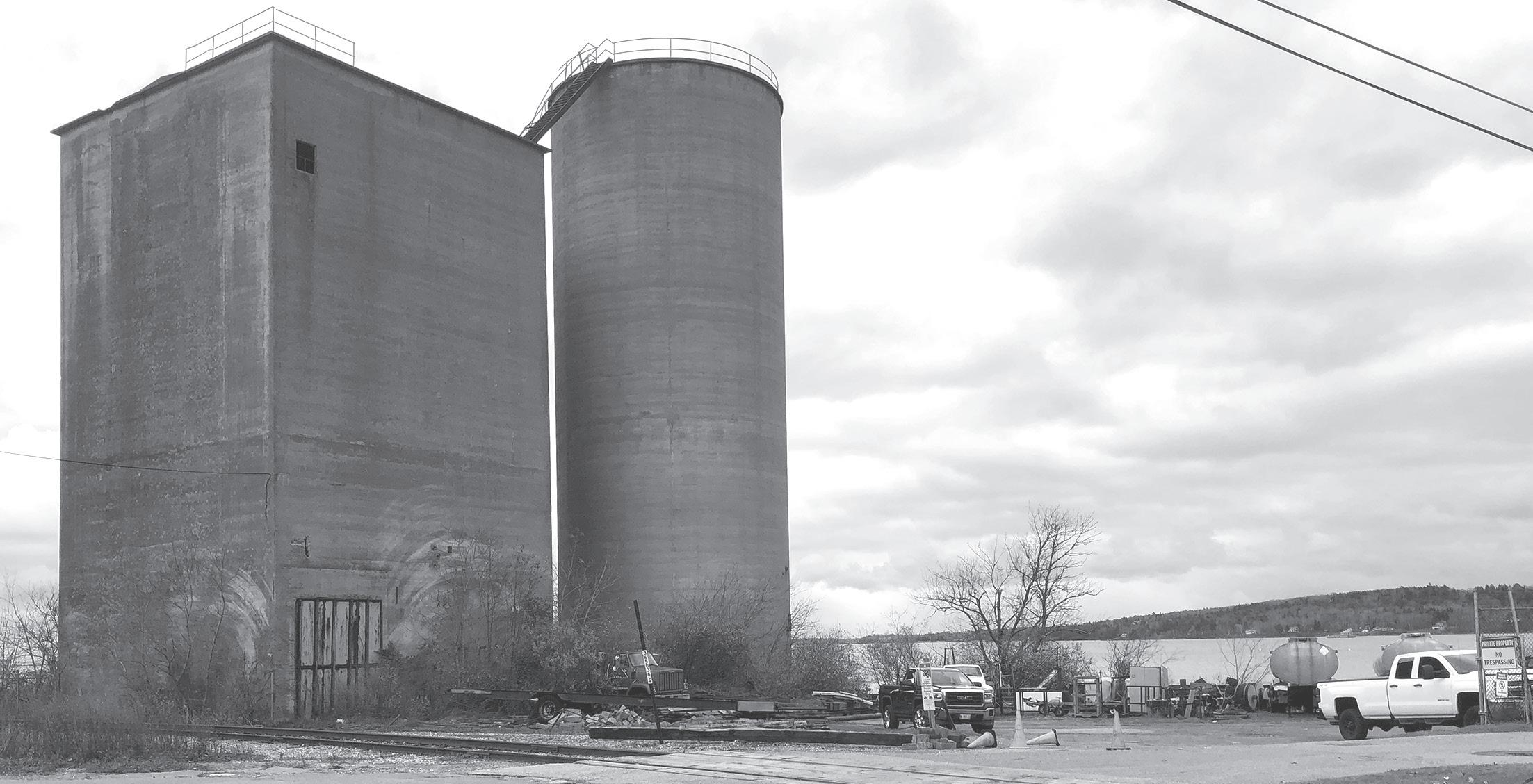
BY PAUL KAROFF
Drive through the smallest no-stoplight town in the Midwest and you’ll encounter a hulking grain elevator. The ubiquitous structures define the landscape in the country’s grain-producing midsection. But what is one doing on the harbor in Rockland?
The answer, it turns out, involves mid-20th century competition between rail freight and maritime shipping, an ill-fated entrepreneurial venture—and chickens.
It was the early 1960s and an enterprising group of local business leaders hatched a plan to transform an unused parcel of harbor frontage at the foot of Mechanic Street in Rockland’s South End into working waterfront in support of the region’s burgeoning poultry industry.
Chicken production had seen meteoric growth across the state, especially in Waldo and Knox counties. By 1952, gross farm income from broilers, at nearly $24 million, was the state’s top agricultural product, with an
economic impact rivaling that of the storied sardine canneries that dotted the Maine coast. Large processing plants employed hundreds in places such as Belfast, which proclaimed itself the “Broiler Capitol of the World” and hosted an annual festival that featured what was billed as the world’s largest chicken dinner.
All those birds —mostly broilers raised for meat but also layer chickens for egg production—required feed.
Railroads had a monopoly on the transport of feed grain and producers complained that high freight costs were putting them at a competitive disadvantage to southern rivals. The Rockland plan called for the construction of a terminal for receiving grain shipments by barge, along with a mill to process it into feed, and four massive concrete silos.
The project attracted an influential champion, Sen. Edmund Muskie, who helped secure federal financing and in 1966, a modern grain mill and the first 100-foot-tall silo rose. Prock Marine, a mainstay on Rockland Harbor today, constructed a sturdy granite pier.
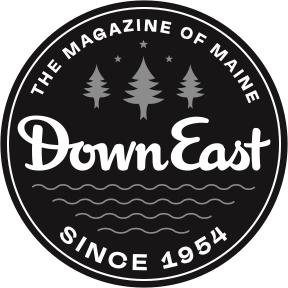

If there was celebration after a newly purchased 2,500-ton ocean-going barge brought the first grain delivery to Rockland in 1967, it was short lived. The railroads immediately responded to the ocean-faring competition, reducing their fees and eliminating the newcomers’ price advantage. Meanwhile, the venture proved to be tragically ill-timed; Maine’s poultry industry had passed its peak and entered a steep decline.
Only one barge shipment of grain was delivered to Rockland. Although the mill continued to process into the 1970s—with grain delivered by rail—the whole operation was a spectacular failure. The owners declared bankruptcy. Citizens who purchased bonds to help finance the enterprise never saw a penny in return. Within a few years of opening, Rockland’s grain terminal sat unused and mothballed.
After being foreclosed by the banks and passing into city ownership, the property was purchased by the Passamaquoddy Tribe in 1985 as part of a larger transaction that included other properties, notably the Dragon Cement operations in nearby Thomaston. The
tribe sold off the Dragon plant within two years of acquiring it but has held the Rockland harbor front property ever since.
Over the years, various ideas were floated for the dormant site, including a municipal fish pier, reviving poultry operations, condominiums, and a Wabanaki heritage center, but none panned out. Some envisioned using the deepwater pier to serve an expanded commercial fishing fleet and early backers even made a play to be Maine’s landing point for ferry service to Nova Scotia, in the end losing out to Bar Harbor.
The current vision is to raze the structures and return the site to a working waterfront, potentially as part of a future aquaculture project the Passamaquoddy Tribe is pursuing at its Pleasant Point reservation outside of Eastport. But a spokesman cautioned that there is, so far, “no definitive plans… it’s a vision.”
Today, the fenced-off site is overgrown and a flock of pigeons roosts on the decaying silo and mill building, which sit as forlorn monuments to a vision from another time.

Saving Marshall Point
Locals preserved iconic lighthouse 35 years ago

BY TOM GROENING
One of the Maine coast’s most recognizable, beloved—and accessible—scenes might have had another fate. In 1988, a rumor circulated through St. George—which includes the villages of Port Clyde, Tenants Harbor, and Martinsville— that the Marshall Point Lighthouse would be converted into a hotel and resort property.
This is the iconic site that appeared in the 1994 film Forrest Gump, in which Tom Hanks as Gump ran down the walkway to the light tower (in fact, visitors often mimick Gump’s run up and down the walkway). It’s the place where untold numbers of engagement and wedding photos are shot. Where school children study the contents of tidal pools. Where tourists feel the bracing breeze off Penobscot Bay and locals point out for them the cliffs of Monhegan Island on the horizon.
All those years ago, locals and summer folk alike mobilized to save the Marshall Point Lighthouse from going into private hands, and that’s worth noting.
But it’s also worth noting, says Nat Lyon, chairman of the Marshall Point Lighthouse Committee, that as of June, the walkway has been stabilized after being damaged from the January 2024 storms.
“The water came right up to the base of the porch steps,” he says, and the road was strewn with rocks. The $150,000 project was completed with funds raised by the committee, not the town.
And if anniversaries are important, well, the museum now housed in the first floor of the keeper’s house opened 35 years ago.
Lyon moved to the area in 1999 from Massachusetts and so wasn’t around when the hotel plan was thwarted. But he’s familiar with the story, and his recounting of the town’s response is blunt: “They said ‘No way!’”
Other key dates in the lighthouse’s history include it being established on the site in 1832, though the current light was built in 1858. The keeper’s house burned in 1895 and was rebuilt.
In 1971, the last lightkeeper left the post, and when Loran signal technology was installed, the Coast Guard abandoned the property in 1981 and boarded up the windows on the keeper’s house. A summer kitchen, which had been added to the land side of the building, was torn down when the operation was automated, as were a barn and a lifeboat station near the shore.
Back in 1988 when the hotel rumors were circulating, locals, including Irene Rizkalla, organized the committee and launched a campaign to rehabilitate the keeper’s house and open a museum there.
“I was heart-broken,” Rizkalla remembers feeling when she heard the rumor, which included the possibility of tearing down the keeper’s house. “It made me totally heartsick. The people from Port Clyde,” which is where Marshall Point is located, “were very upset. And when I heard, I got very upset!”
She lives in a circa-1790 house in St. George village and in conversation, it’s clear her roots and love for this community run deep. She points to seats at her dining room table where people gathered to plan their effort to block the hotel.
“We made a plan, got the key, and started cleaning the building,” she remembers. “The Coast Guard thought we’d lose interest. Well, that never happened. Three years later, we opened the museum.”
In fact, the Coast Guard entered into a 30-year lease, initially with the St. George Historical Society.
The committee has succeeded raising enough money to sustain maintenance of the lighthouse.
“We’ve put more than $500,000 back into the property,” Lyon says. Some of the revenue comes from renovating and then renting a second-floor apartment in the keeper’s house.
“It has to be someone who can live in four small rooms,” Lyon said. “Great views, but small space.”

The museum, with free admission, has been a success, he says, with about 23,000 visiting during the warm months. In 1995 the committee added back the summer kitchen structure which houses the collections.
There are displays of old lobster buoys and sardine cans, tools from the granite industry, vintage photos of the site, explanations of Loran, light lenses, and historical documents and genealogies, along with a gift shop. This year, 64 volunteers were on-hand to keep the museum open for visitors.
Though Lyon moved to the area 26 years ago, he has been active in the community, working as a sternman for 11 years and on the Monhegan Boat Line for five. And he’s proud to be part of the effort to sustain the property.
“That’s the whole thing, to preserve this as long as we can,” he says.
Rizkalla, too, expresses pride in “the fact that we have done it, and now own it. No one can take it away from us.”


Good idea, but…
To the editor:
Stephen Rappaport’s entertaining article (“Landings reports: Good science, but unpopular,” August/ September issue) shows how any important idea can transform itself into punishment. Sustaining a resource and a luscious economic delicacy is a no-brainer; turning the working stiffs of lobster industry (and their uncompensated spouses) into sea-level (somehow “on the ground” doesn’t work!) data collectors for the needed science is, in plain terms, nuts!
My professional life involved the practice of “policy science,” the study of how knowledge can be brought to bear on the formation and evaluation of public policy. If, during the years thereafter as a university dean, I had been asked to improve administrative performance by daily tracking memos I wrote, the program and student evaluations I’d sought, the support I provided faculty and staff, and whether I placed my own calls or had a secretary do it, I’d have left the role for one in which I could do the work I was hired for, not study it.
Pertinent data can inform good policy. But asking the working stiffs to daily collect and monthly report is understandably crazy-making for them, will alter the appeal of the
letters to the editor
sometimes-dicey livelihood to those with gumption to take it on and bears re-thinking from top to bottom. There have to be more sensible approaches.
Hendrik D. Gideonse Brooklin
‘Good noise’
To the editor: I just finished reading every word (as usual) in the October/November issue of The Working Waterfront. Editor Tom Groening has led this impactful, practical, human, and fascinating publication that continues to make “good noise” about the island and coastal universe. I know from experience that Tom will look back with satisfaction at his career.
Roger Demler Ashland, Mass.
‘Gentle power’
To the editor:
I was stunned to read Tom Groening’s latest column in The Working Waterfront to discover that it would be his last as editor. I can’t tell you how much pleasure he has given me (all of us) over the years
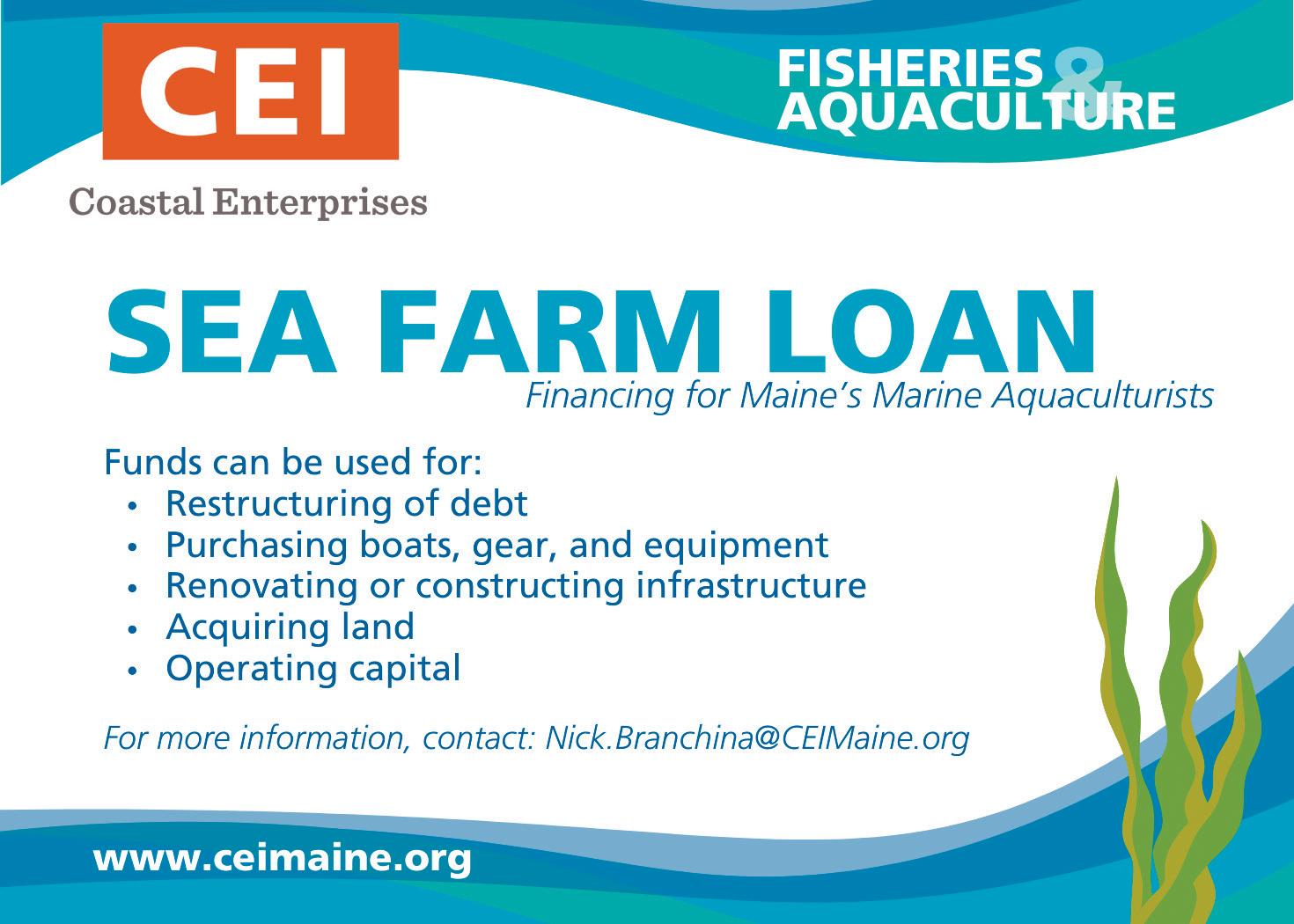
through the gentle power of his writing, insights, humor, and ability to bring home the complicated beauty of the Maine coast to those of us who don’t live there full time.
After 40-plus years on Monhegan, I’m closer to wrapping up my own time there. I’ll be 80 next month and bad knees are not a good fit for those trails. I hate the idea of a golf cart but that may be my extender.
Bob Mrazek Ithaca, N.Y.
Meeting the mission
To the editor:
I’d like to offer a simple thank you for the enormous contributions Tom Groening made in helping the Island Institute meet its mission over the last many years. If it seeks to connect islanders to information about themselves and from the wider world, and to connect Mainers (and others) to the treasure and differences of the inhabited Maine islands, then the work has been a huge part of that success. I have to comment on the excellence of what was written by the four island columnists in the October/November issue. Each is poignant in completely different ways. Their issue-by-issue
contributions have cumulatively added insight and humanity to the rest of the reporting on issues, challenges, and trends affecting Maine islands. In retirement, I’m filling volunteer roles on three different boards. It’s just like work, except more satisfying. I hope Tom finds similar ways in retirement to add value to the things you care about.
Richard Mersereau Brunswick
‘Heart’
To the editor:
I’ve always appreciated the heart Tom Groening put into every chapter of his work in Maine newspapers. He’s left a meaningful impact on readers, the community, and colleagues like me.
Jill Lang Hope
‘Facts are key’
To the editor:
Thank you for the column “Reflections on a ‘great business’ and job” in the recent issue. I appreciated Tom Groening’s reflections on journalism,


his career, the great Bob Woodward, and the changes to them over the years.
When Tom said to his wife about The Working Waterfront, “I think I can make some noise with this paper,” he was correct!
I know that my life has been enhanced as a reader of The Working Waterfront during his tenure and for that I am thankful. The dedication to craft and adherence to the notion that “facts and context are key, and they are best presented plainly and clearly” is what I have admired about his writing.
Also, one of the bonuses of your leadership has been that we can send you emails and know that they will always be read and considered. Tom’s ability to “listen” is one of your superpowers and is a skill that so few of us remember to practice.
Thom Heyer
New York City/Islesford
‘Making waves’
To the editor:
Many thanks to Tom Groening for his work at the Island Institute and The Working Waterfront. I live in Alabama but have had a long love for the Maine coast and working harbors particularly the islands. Despite my run-on
letters to the editor
sentences and poor grammar, I love the written word and have particularly enjoyed The Working Waterfront for some time now. It is chock full of useful information that I would find very hard to come by were I not reading the entire issue each month.
I do think Tom and the paper have and are making waves and making a difference. Sorry to see him go, but congratulations on a job very well done!
Robert Willis Israel Mobile, Alabama
A quick thank you
To the editor:
I’m writing a quick note to thank Tom Groening for his perspective and insight with The Working Waterfront and Island Journal. I especially appreciate the longer view and putting issues, large and small, into perspective and context—a skill that is greatly missing in today’s media. I have also enjoyed the photo essays, which are a different view in storytelling. I hope he enjoys retirement but keeps writing!
Doug Tuttle York Harbor
FULL INVENTORY READY FOR YOUR WATERFRONT PROJECTS!
• Marine grade UC4B and 2.5CCA SYP PT lumber & timbers up to 32’
• ACE Roto-Mold float drums. 75+ sizes, Cap. to 4,631 lbs.
• Heavy duty HDG and SS pier and float hardware/fasteners
• WearDeck composite decking
• Fendering, pilings, pile caps, ladders and custom accessories
• Welded marine aluminum gangways to 80’
• Float construction, DIY plans and kits
Delivery or Pick Up Available!
(207) 772-3796
www.customfloat.com

Fair seas’
To the editor:
I read the most recent edition of The Working Waterfront and was surprised to see Tom Groening will be completing his fine work there and exploring the fun avenues of retirement in the winter! I am a fan of retirement, but losing this voice and vision for the publications of the Island Institute after all these years will take some coping! I have enjoyed all that he brought to us month after month—and the stunning Island Journal each summer. I wish him well, and fair seas!
Thom Buescher Cushing
‘Other people’s stories’
To the editor:
I’d heard of Tom Groening’s impending retirement from Island Institute President Kim Hamilton, and now I see in The Working Waterfront that it’s official. I especially like his line in his farewell that we journalists let other people tell their stories. How true that should be. He’s had a great run and has made both Island Journal and The Working Waterfront important publications in
this part of the world and deserves a smooth and happy retirement.
David K. Shipler Swan’s Island
Good journalism
To the editor:
Congratulations to Tom Groening for his retirement. It’s certainly well-deserved. I’ve always respected his adherence to the ethical practices of good journalism, with fair, balanced, and accurate articles that tell the stories of the communities along the Maine coast.
Too much journalism these days seeks conflict or sensationalizes. Tom’s efforts to listen to people, with a dose of humility, and provide gentle guidance exemplify the best journalistic standards.
Edward French Publisher/Editor, The Quoddy Tides Eastport
The Working Waterfront accepts letters to the editor of 250 words. Send them to editor Charlie Eichacker at ceichacker@ islandinstitute.org. Longer opinion pieces should be approved by the editor before being sent.



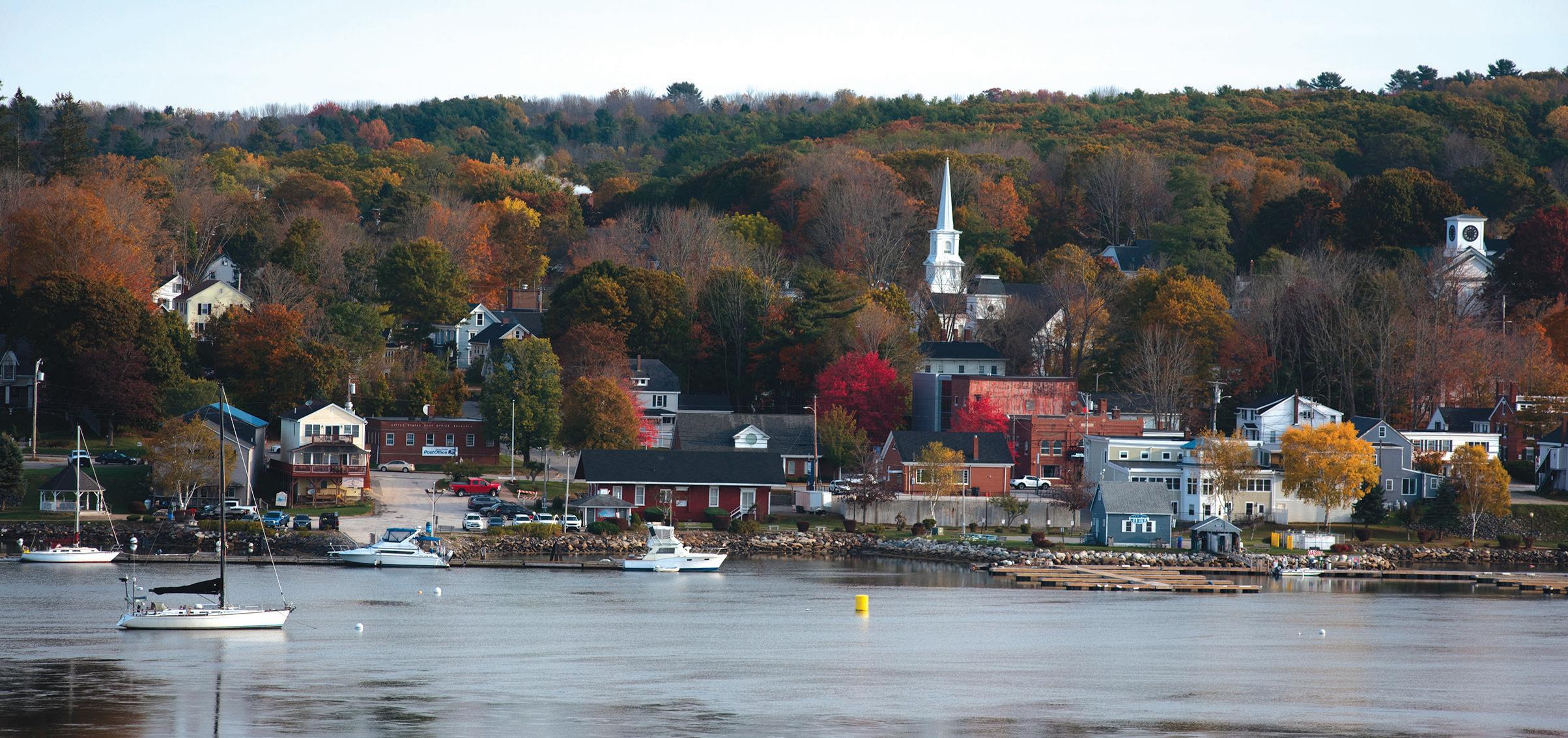
Seasons change in former mill town
Fall foliage around Bucksport
PHOTOS BY LINDA COAN O’KRESIK ESSAY BY CHARLES EICHACKER
Drivers heading east along Route 1 get to a stoplight just after they cross the Penobscot River.
Turning right, as many do in the summer and fall, eventually brings them to Acadia National Park and beyond. Going left leads to the downtown of Bucksport, a small waterfront community that lost its paper mill just over a decade ago. Bucksport has mostly weathered the loss of its largest employer, although a land-based salmon farm proposed for the mill site still hasn’t materialized. A healthy number of new restaurants and shops have opened downtown in recent years, in some cases replacing older ones. It’s a good spot to take in Maine’s fall foliage, especially with other scenery including historic Fort Knox and the towering Penobscot Narrows Bridge & Observatory, and the more offbeat smokestack still standing at the former mill. The community offers other frights in October, including a Halloween festival called Ghostport and the rumor of a curse on a stone monument commemorating the town’s founding father, Jonathan Buck.

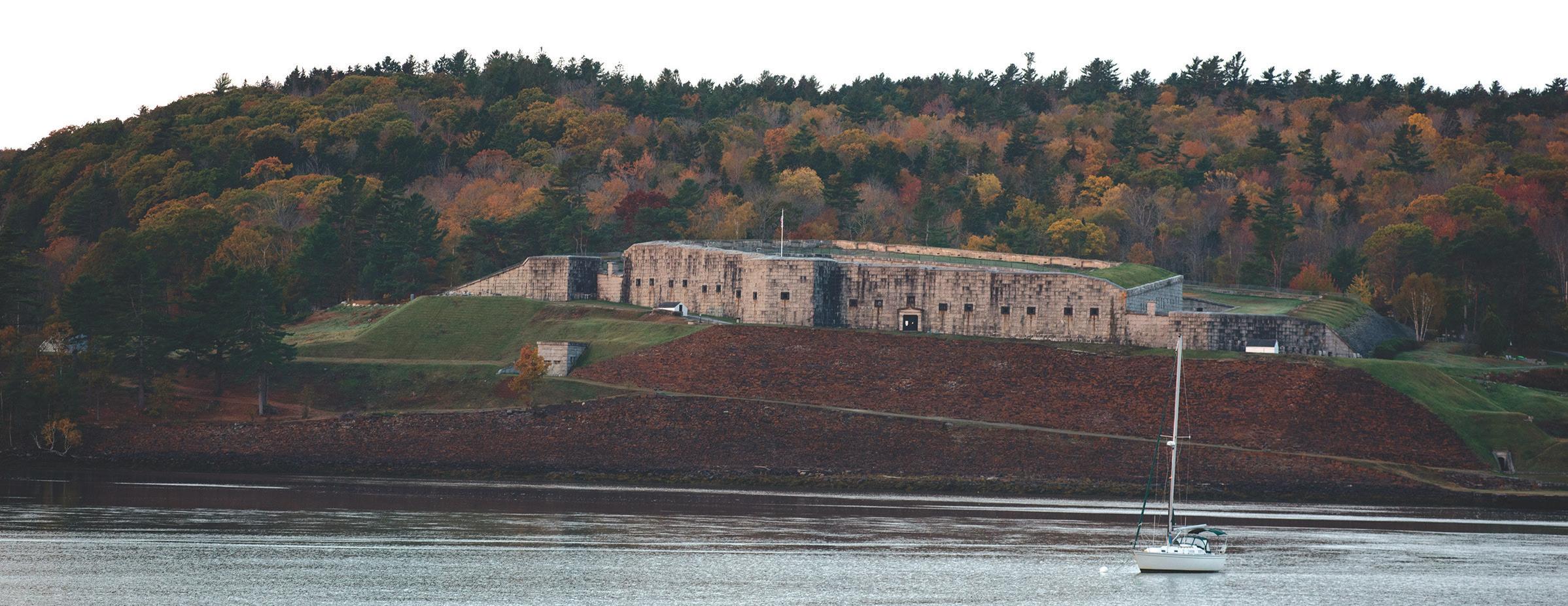
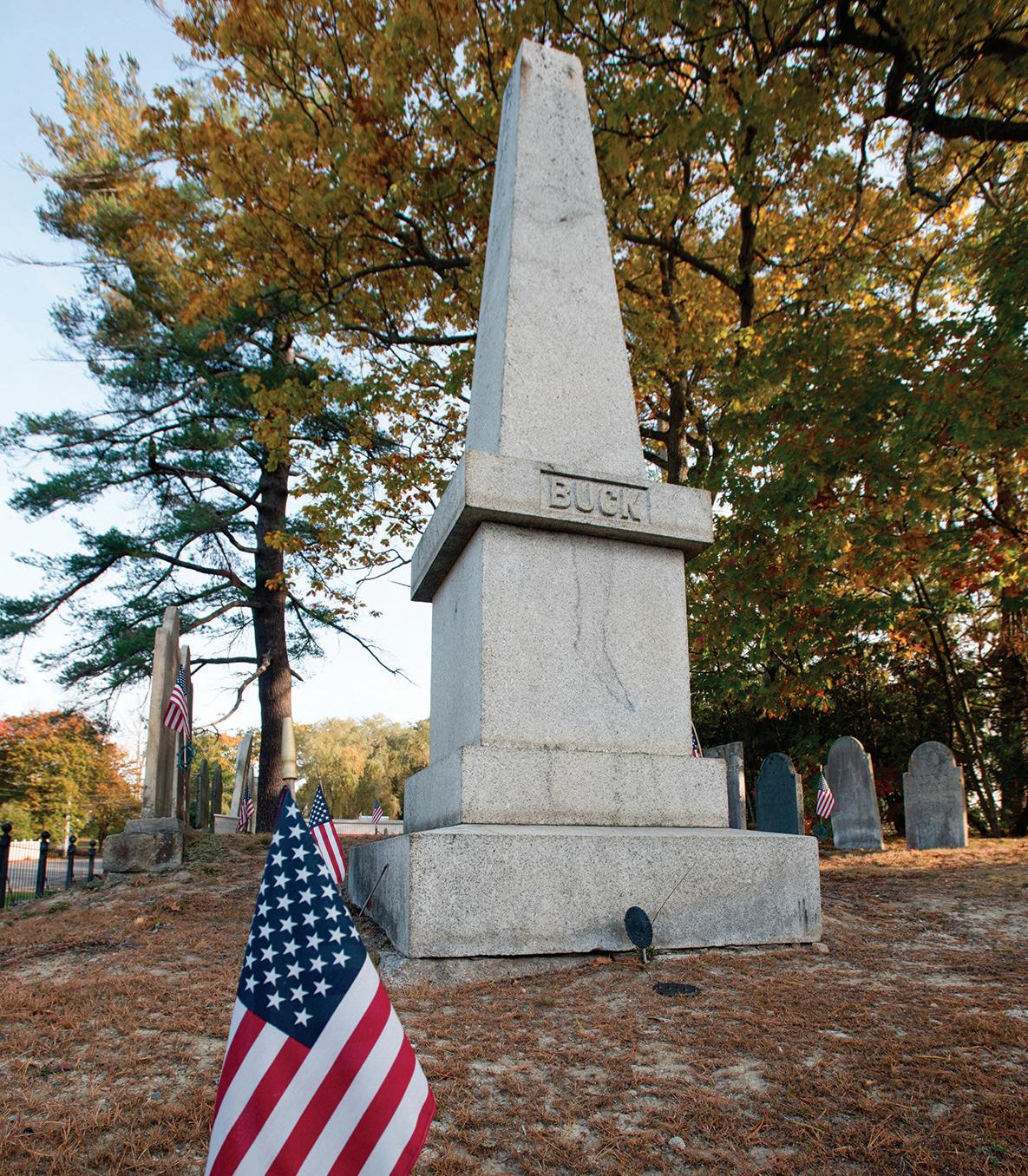

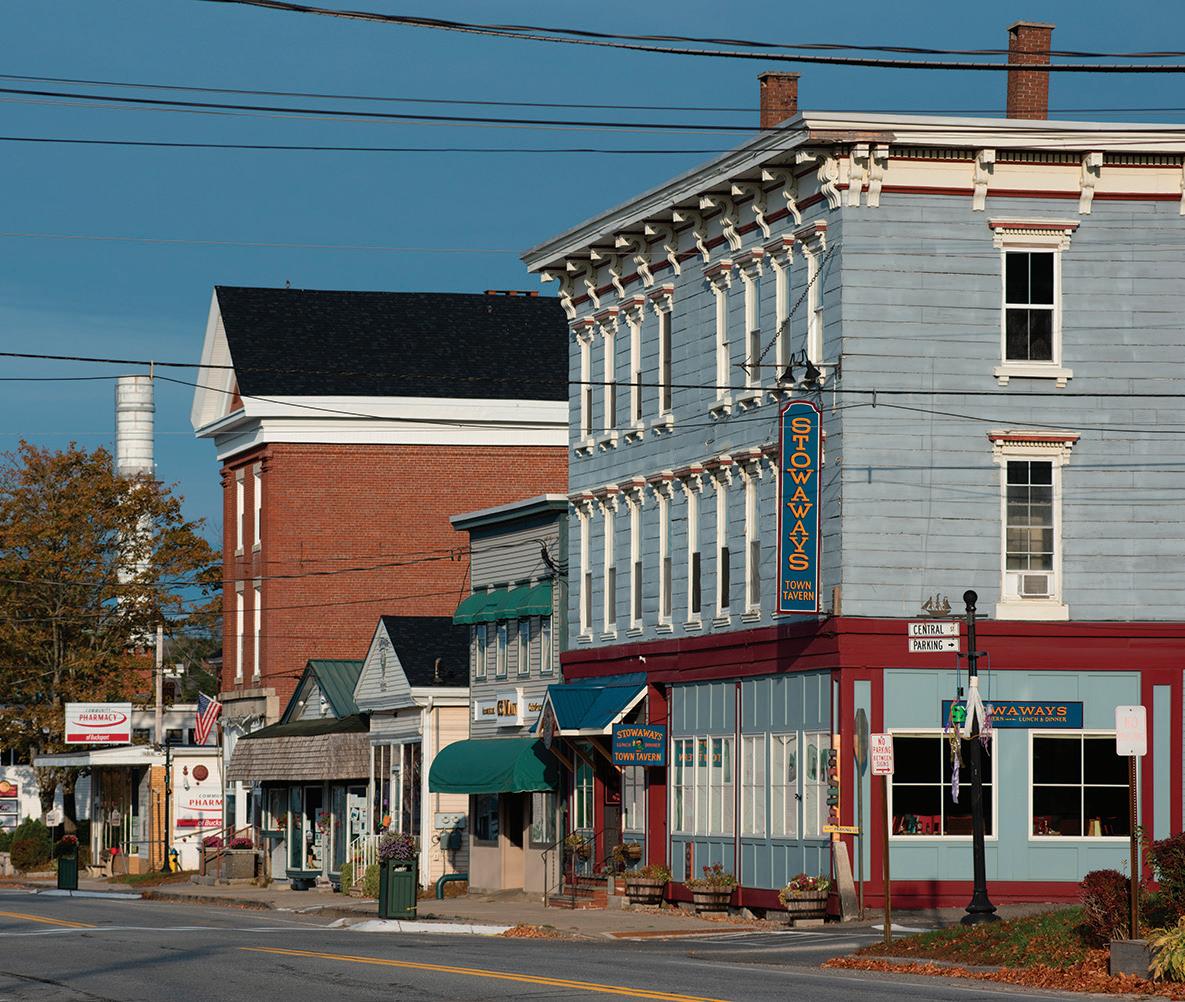
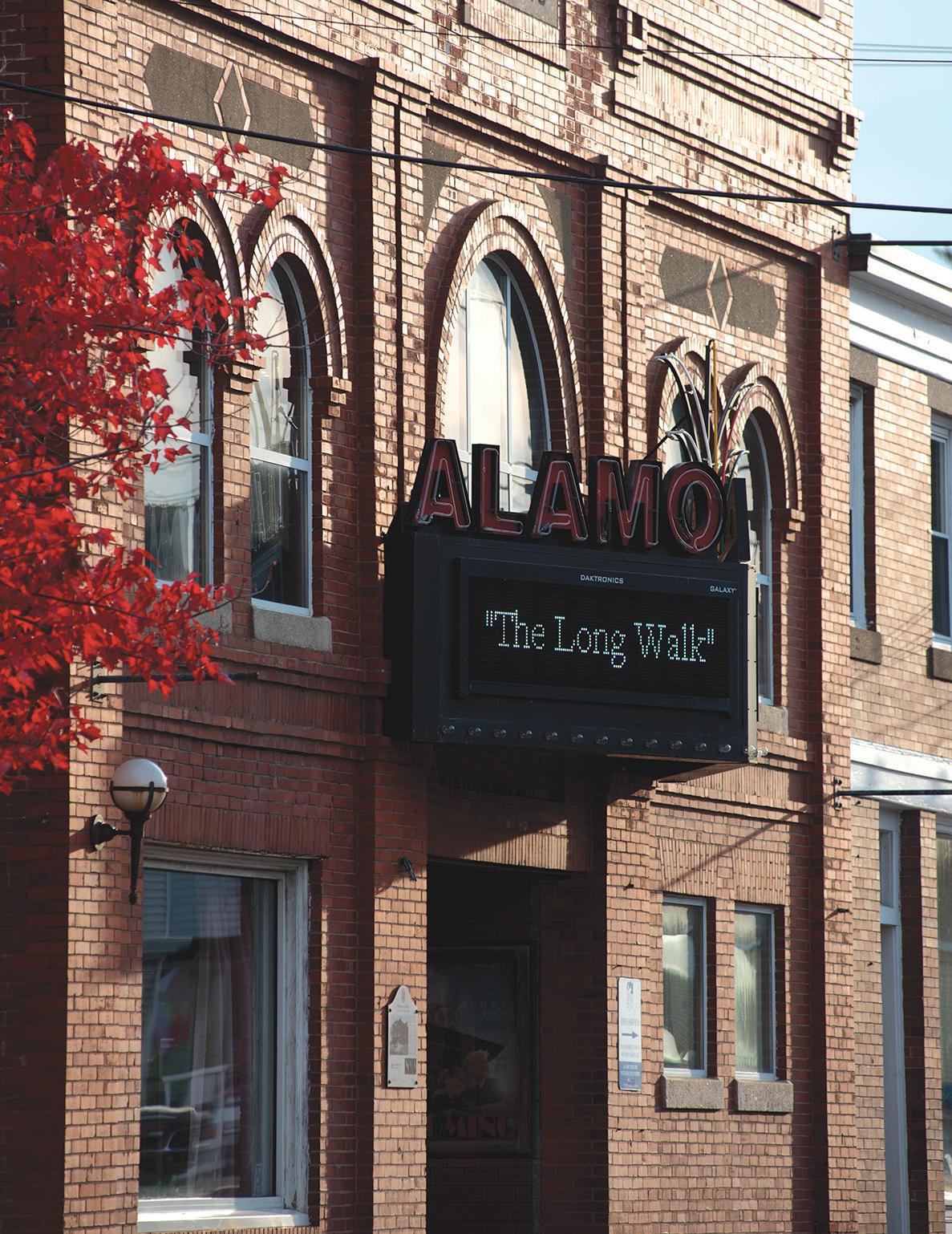
Our Island Communities

Saving a Little Diamond shore Casco
Bay island fought erosion with nature, community
BY KAI HOLLOWAY
In September, I visited the small community of Little Diamond Island in Casco Bay to witness something remarkable: a shoreline restoration project marked by new science and sheer community determination.
Hosted by Island Institute, the event brought together island residents, representatives from neighboring Casco Bay islands, and others eager to learn how coastal communities can protect themselves against the relentless force of the sea.
The story begins in January 2024. Two severe storms battered the island, eroding 60 feet of shoreline along Casino Beach. The waves washed away the community’s golf cart parking area and washed out the road connecting the island to its public dock.
For the small Little Diamond community the damage was devastating. The destruction left the community wondering, “What do we do now?”
Several island leaders responded, and through trial and error, crafted a solution that was as natural as it was strategic: a coastal sand dune system.
Sand dunes are more than beach features. They are living barriers against erosion and storm surges. Acting as sponges for wave energy, dunes protect inland areas from flooding while supporting native vegetation and wildlife.
By planting beach grass, communities can stabilize and prevent sand from washing away, and enable the coastline to rebuild itself naturally. For Little Diamond, this approach was both environmentally responsible and permitted.
At the town hall, known locally as the “Casino,” residents presented their project. Then we walked the short distance to the dune system. The work was impressive. Every contour, log placement, and patch of grass reflected careful planning and countless volunteer hours.
Even with the dunes in place, the project required additional reinforcement. The storms had left a gaping hole along the shoreline, threatening to funnel water directly at the newly constructed dunes. To address this, the gap was filled with crushed rock, creating a natural drainage system to protect the dunes and the rock wall they had constructed behind the dune.
The wall, made of large stones, serves as a backup barrier. While dunes absorb most wave energy, the rock wall ensures that even in extreme conditions, waves won’t breach the island’s infrastructure. It’s a layered approach: dunes first, rocks second, vegetation throughout the dune—a system designed to withstand the sea’s unpredictability.
Next came the work that truly showcased the island’s spirit: volunteers dedicated countless hours to lay “coir” logs along the base and contours of the dunes. Made from tightly bound coconut fibers, coir logs hold sand in place, slow water runoff, and encourage native vegetation to grow. Over time, they biodegrade naturally, leaving behind reinforced dunes ready to withstand wind and waves.
Once the logs were in place, dune grass was planted by hand, then carefully fertilized and watered to ensure it would take root and thrive. By the end of the project, the dunes were not just functional—they were a living testament to the dedication and hard work of the island’s residents.
Now, almost two years after the storms, the dunes blend seamlessly into the shoreline and haven’t

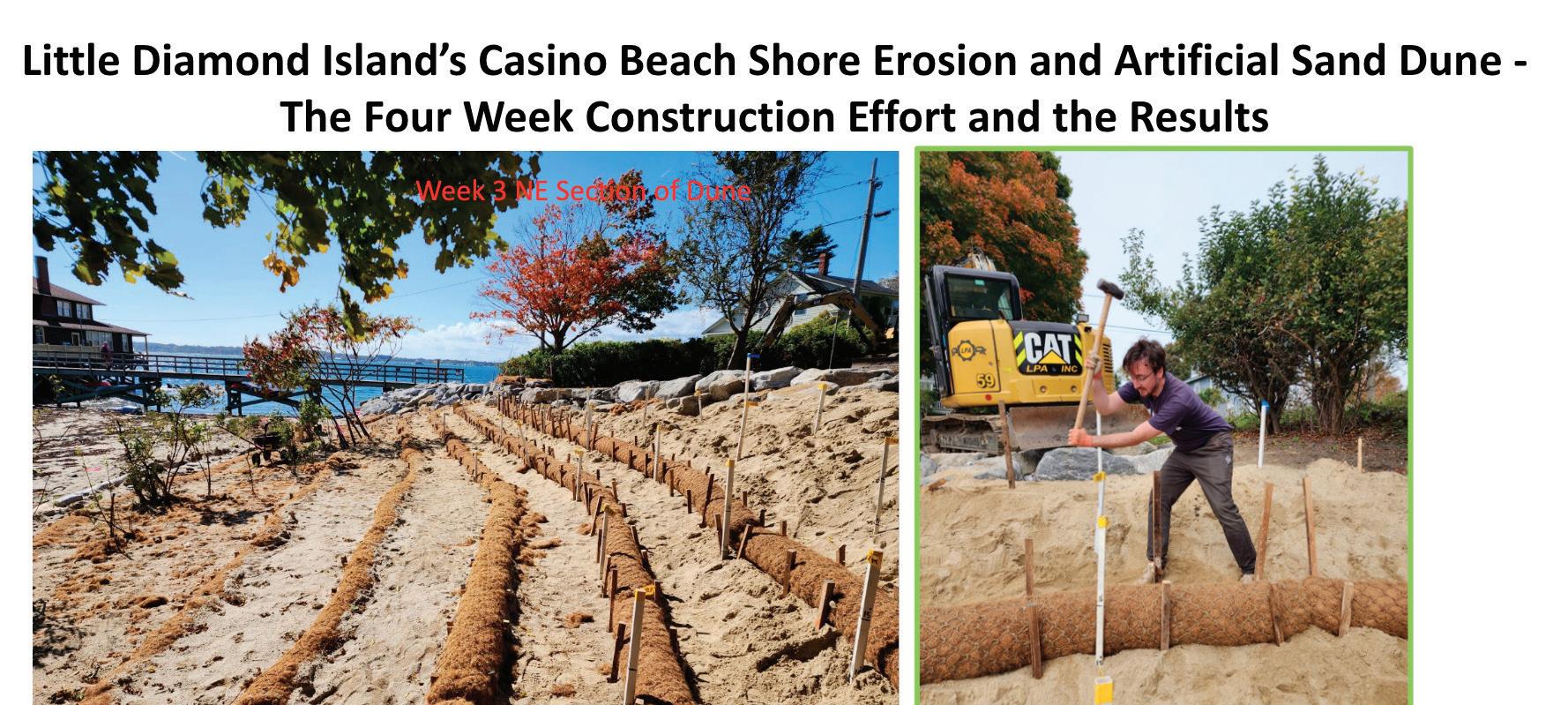

sustained any damage. For Little Diamond residents, the project represents more than protection—it embodies pride, resilience, and the power of their community.
The total cost of the project was approximately $140,000, including a $110,000 contract with Lionel Plante Associates and $25,000 for materials supporting volunteer labor.
Little Diamond Island’s approach demonstrates that protecting a shoreline doesn’t always require massive concrete seawalls or expensive engineering projects. A well-designed sand dune system, reinforced with rock walls and supported by native vegetation, can
provide a sustainable, cost-effective, and visually appealing solution.
Visiting Little Diamond Island left me with a renewed appreciation for what’s possible when science, planning, and community spirit come together. For coastal towns facing the growing threat of erosion, the lessons here are both practical and inspiring: sometimes, the best defense against the sea is sand, sweat, and shared purpose.
Kai Holloway is an 18-year-old journalist who lives on Cliff Island. He is a feature writer for Islands.com and his blog is at Kaioutside.com.
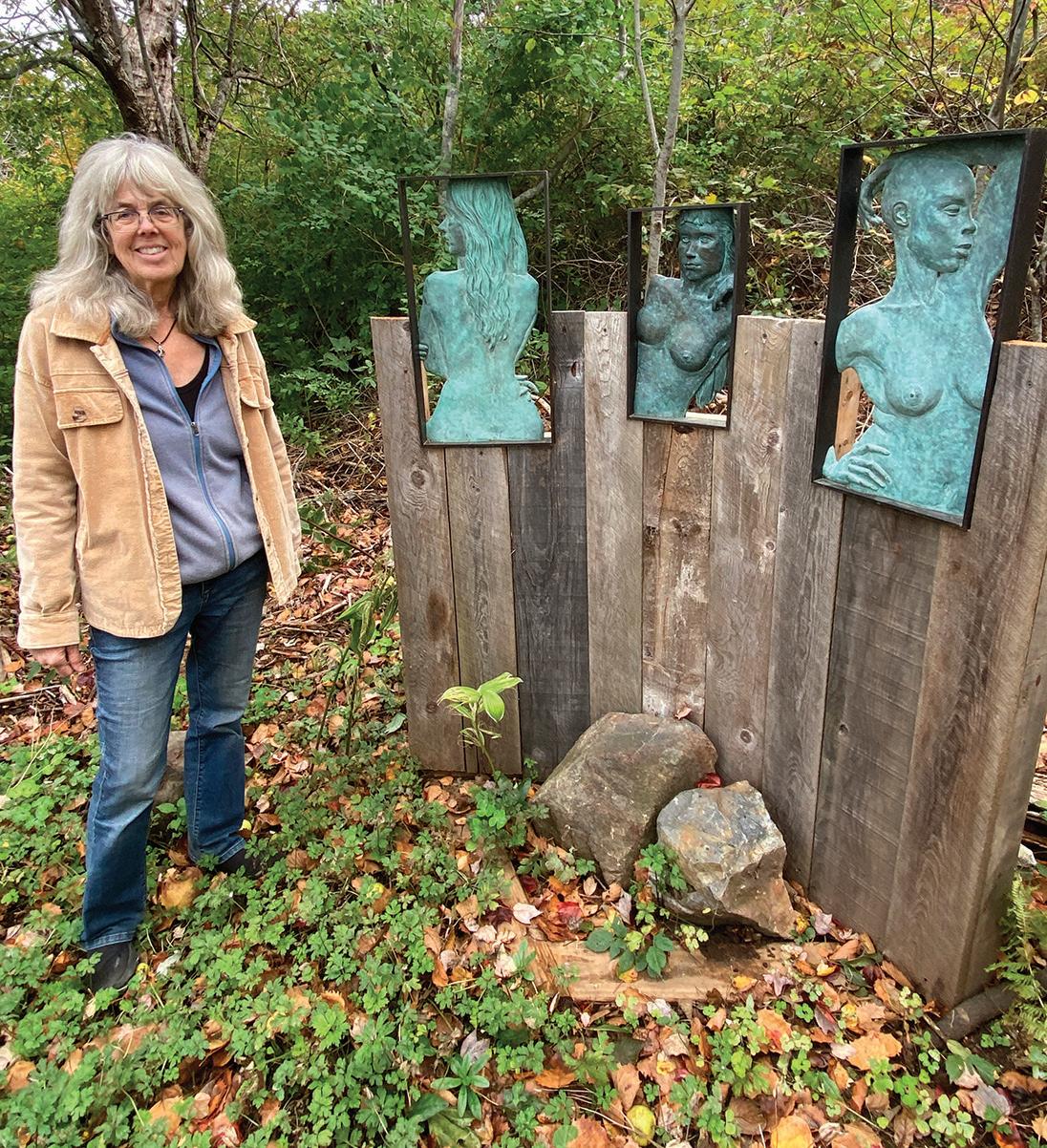
Daphne Pulsifer’s threedimensional life on Monhegan
Sculptor found love and life 12 miles out to sea
BY MOLLY RAINS
This story first appeared in the Lincoln County News and is reprinted with permission and gratitude.
Twelve miles out at sea on Monhegan Island, sculptor Daphne Pulsifer often works in near solitude. In her peaceful, airy studio on Light House Hill Road, she shapes her pieces accompanied by her dog, Emma, and the visitors who occasionally stop in during open hours to peruse her work.
Yet in these quiet moments of creation, Pulsifer reflects on the connection with others she says inspire each sculpture and have populated her life on and off the island.
Pulsifer was born in Newport to a family with deep roots in Maine. When she was very young, her family left Maine and she grew up in New Jersey and Philadelphia. Much of her extended family remained in Maine and she remained connected to the state and visited often.
“We grew up coming home to Maine every summer,” she said. “There was always this sense that Maine was home.”
As a child, Pulsifer was incessantly creative.
“My mother used to complain and say that I didn’t have any clothing that didn’t have paint or ink stains or something on it,” she said.
However, it wasn’t yet clear to Pulsifer that she would become an artist. After
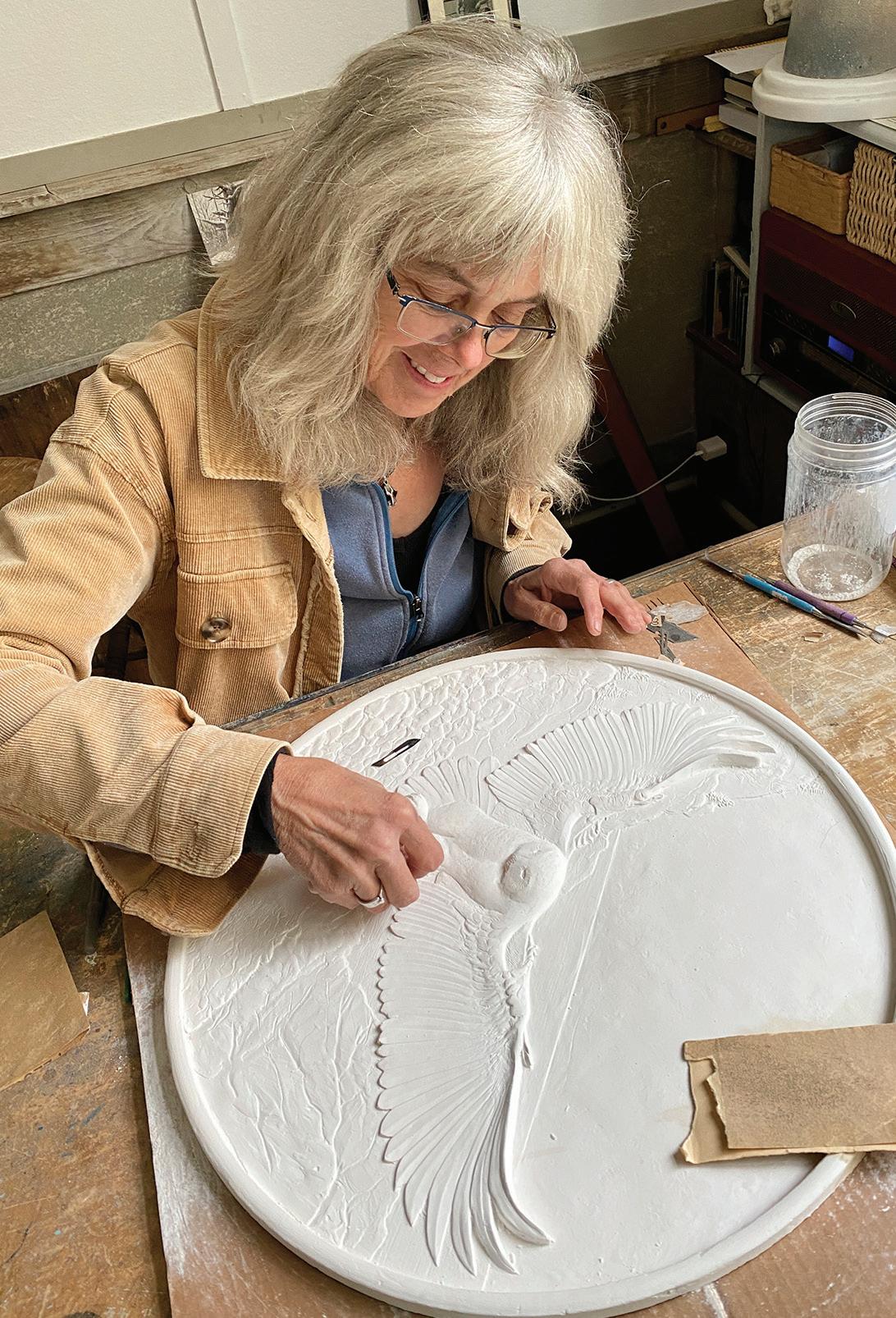
high school, she enrolled at Carnegie Mellon University in Pittsburgh, where she intended to study architecture. In retrospect, the move was not one she had thoroughly thought through.
“I don’t think I had a clear idea of what that could mean in terms of a career, and once I was involved in the academics of it, it didn’t hold me,” she said.
What did captivate Pulsifer was the idea of living out at sea. For one of her classes, she and her peers researched coastal islands, and she became captivated by the island and artist colony of Monhegan.
“I thought, I want to go check that place out,” she remembers.
Pulsifer traveled to the island one May while still a student
She settled on the island in 1983. She began her tenure working at the Trailing Yew Inn and at the Monhegan House, but also found a place within the art scene.
She also met and fell in love with her husband, Daniel Bates, on Monhegan.
“He was just on the road, digging a ditch,” she recalled. He had two children and together they had two more. The island encouraged the family to be selfsufficient, Pulsifer said.
“ That was the big, big moment, to come here and think, OK, this is kind of cool. I think I’m going to stick around.”
“That was the big, big moment, to come here and think, OK, this is kind of cool. I think I’m going to stick around,” she says. “I loved the beauty of the environment, and being able to just be present and walk around and read and draw.”
After that first visit, Pulsifer dropped out of college. She would return to Monhegan just months later, in the fall, to spend winter on the island.
“It just felt so natural to me to be here,” she says.
“When we were raising our children here, we didn’t have many alternatives,” she said. “We didn’t go ashore for long periods of time or even short periods of time during the winter.”
The family would move to the mainland in 1989 so Bates could go back to school, but after the kids graduated from high school, the couple would continue to return to Monhegan during the summers.
Over the years, Pulsifer’s art style continued to evolve, moving from printmaking to sculpture, working in wood, plaster, bronze, and even blocks of blue Styrofoam, used to keep floating docks aloft, and that wash up on Monhegan’s shores.
She loves the physicality of sculpture and the extra layer of difficulty involved in creating three-dimensional artwork.
“It’s an engineering problem almost every time where I have to consider, OK, how is this going to be molded,” she said, “How is this going to, literally, support itself, and what are the different considerations that might come into play?”
Humans, wild and domestic animals, and flowers feature often in Pulsifer’s sculptures.
As a sculptor, she does not engage with the art community in a typical way.
“A lot of the work I do is solitary work. I don’t work with other artists. I’m not like a plein air painter. I kind of envy them sometimes, because they can take their work anywhere and go with their friends and be a group,” she said.
She does host gatherings with other artists, though.
“It’s important to me to have connections even though I actually kind of work in isolation most of the time,” she said.
Pulsifer has also curated and cultivated a sculpture garden behind her studio, where some of her larger works stand among lush, planted beds. She hopes visitors will find peace among the art and greenery.
“It makes me really happy when I look out and see someone sitting on the bench,” she said.
She’s grateful to live a life in which she is free to create every day and continue living in the present.
“I’ve always tended to be more focused on today, and then the world sort of evolves around me,” she said.
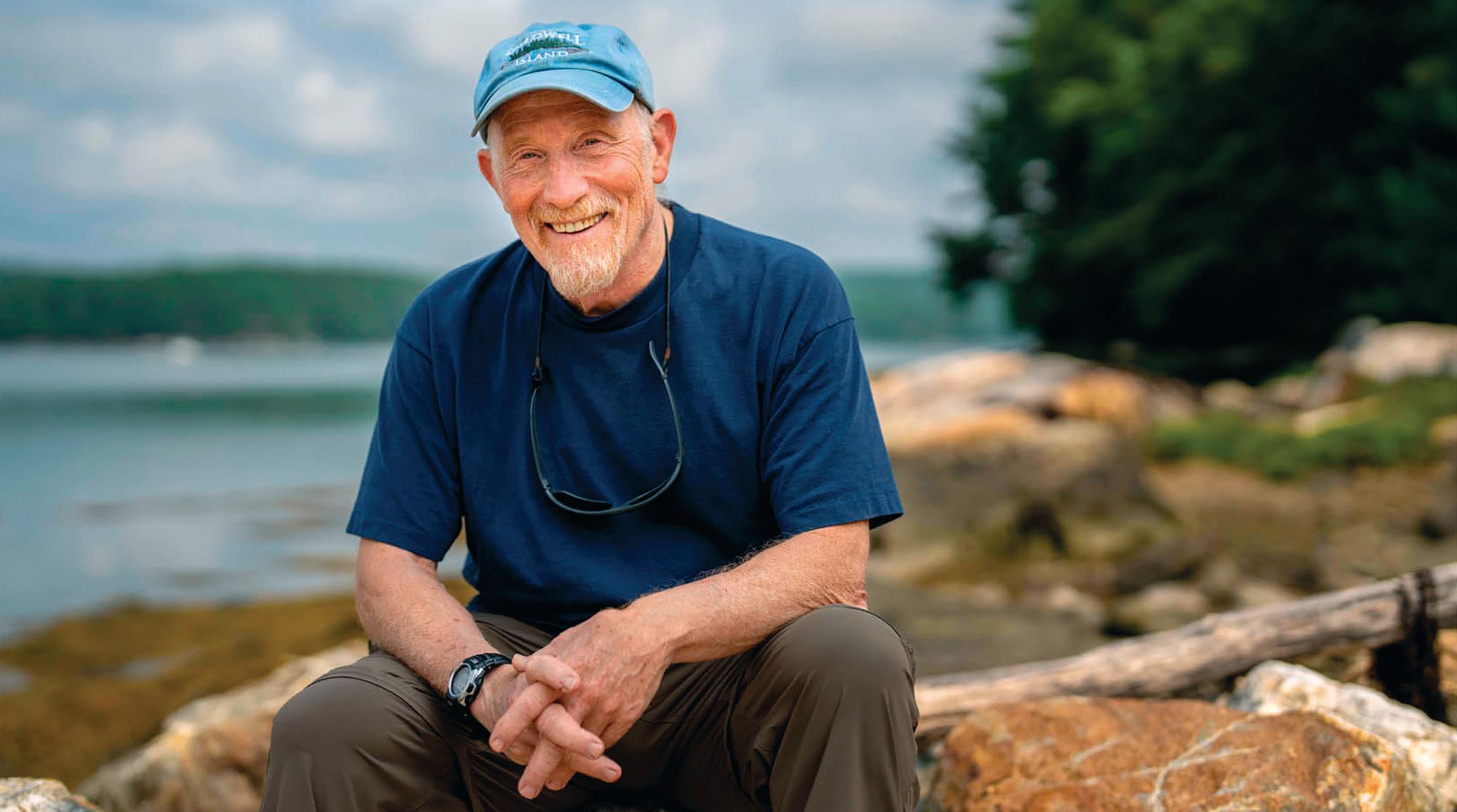
ON THE RECORD WITH…
Lobster scientist Bob Steneck
In-the-water research led to understanding fishery
BY TOM GROENING
Bob Steneck can now add to his already impressive resumé membership in the American Academy of Arts and Sciences. The work that led to that honor for the former University of Maine professor came from donning scuba gear and messing around with critters on the sea floor.
Steneck suspects it was his work studying coral reefs that earned him election to the prestigious Academy, which was established nearly 250 years ago. But in Maine, his in-the-water research on lobster helped bridge a gap between fishermen and regulators. And it helped the industry accurately predict future lobster landings, a critical component in keeping this important economic sector thriving.
Steneck is the first UMaine faculty researcher to be elected to the Academy, where he joins Charles Darwin, Albert Einstein, and Jonas Salk.
Our conversation has been edited for length and clarity.
WW: What made you get interested in this field, in oceanography or marine biology or whatever you characterize the focus area?
Steneck: As far back as I can remember, I was always a naturalist. But I was also kind of a water baby. I started scuba diving when I was ten years old, in lakes. I spend a ton of time underwater, and I really liked that.
When I went to college, I was very interested in limnology [the study of freshwater biology] and did some projects in freshwater. During college,
I went to a summer program for six weeks in St. Croix. Suddenly the diversity of the marine world, especially coral reefs, back then, when coral reefs were in really good shape, was very attractive. I took a course from this fellow from the Smithsonian, and I did well in the course, I guess, and he asked if I wanted to be a technician when I graduated. He’s living on a 41-foot trimaran sailboat. He’s asking me if I want to study coral reefs in the Virgin Islands. That wasn’t really a very hard question to answer.
WW: So what year would that have been?
Steneck: So I took the course in ’72, and then I graduated in June of ’73, and a couple of days later I was in St. Croix.
WW: So the coral reef work began first?
Steneck: Yeah. My PhD. at John Hopkins involved the Caribbean, the Pacific Northwest, and Maine. My master’s thesis was all in Maine. I was looking at similarities in algal structure and herbivory under these entirely different systems, where there’s no species in common. So I’m really looking at ecological processes that drive these things. I got hired a month before I defended my dissertation by the University of Maine.
WW: Can we talk about lobster? [In other interviews] you’ve used the term “ecological approach.” Is that more systems based? Is that why it was more accurate in your assessments of the population?
Steneck: My first National Science Foundation grant when I came to the university was to study plant-herbivore interactions. So I was actually studying lipids and urchins and the algae they feed on. All my work was underwater— scuba, and later, submarine.
But I was noticing a lot of lobsters. So I went over the Department of Marine Resources and I said to the head lobster guy, “I’m seeing a lot of lobsters. That surprises me, because I know a lot of people fish for them.” And he rocked back in his chair, and said “No, actually, they’re not that abundant.”
I said, “No, wait a minute. I’m seeing them.” This is not a theoretical question.
That stimulated me to get into the library and look around. I realized nobody, zero, had been studying lobsters in their natural habitat.
Starting around 1983 or 1984, I found it super easy to write proposals saying I’m studying lobster in their natural habitat, going into fundamental questions like what do they eat, who eats them.
In about 1985, I took on Rick Wahle as a graduate student and he wanted to work on horse mussels, and I said, “We’re actually working on lobsters, but what we really need to know is, where do the babies come from?” Nobody knew that. Nobody knew where the nursery grounds were.
He figured out that at least 90% were settling into cobblestone habitats, which are only about 2% of the coastline. That’s really interesting. We found that if they didn’t fall into a cobblestone habitat, they’d be eaten within one to 15 minutes.
We started understanding how babies settled into the sea floor, how
we could monitor settlement, how that could become an early warning system for the lobster landings. My biggest grant from Sea Grant was exactly that, looking for an early warning system. Rick was part of that study.
We started doing sea sampling. I was nominated for a Pew fellowship in marine conservation and my proposal was explicitly to install an ecological approach to fisheries management. And it involved not only understanding the distribution and abundance of lobsters, but also working directly with the lobstermen.
One of the first things I did, because I was curious about the role of lobster traps, was I went to the South Bristol Coop. I said, “I’m really interested in what the role of lobster traps is, and I’m really curious what would happen if you removed your traps from this area called the Thread of Life. And of course, they immediately broke out in laughter. I said, “It’s OK. I’m doing this via DMR (Department of Marine Resources), I’m just asking if this is OK with you. If you don’t want to do this, I’ll go to Pemaquid.”
One of the fellows, who was really well respected, Arnie Gamage, said “This sounds interesting.” At the time there was a growing interest in what the impact of all the lobster gear was. At that time, there was no limit on the number of traps that people could have.
WW: Was this the ’80s still?
Steneck: Yeah, it was. It was like in 1985. I think I did it three years in a row. Every day we were diving and we had these grids on the sea floor, we were looking to see if lobsters were coming back to the same area to shelter, and the answer
is they don’t. We were tagging all the lobsters in that area, realizing that early in life, they’re hardly moving at all, by the time they get to 60 millimeters on carapace, they might be going as far as 1 kilometer, less than a mile, and when they approach reproductive maturity they start going great distances, and at the time that wasn’t known.
And the lobstermen did remove the traps, and suddenly this became their project. I was going out with lobstermen, seeing what they were catching. At that time, there was a real big push to increase the minimum gauge, and the size-frequency distributions I was looking at, just measuring every lobster that I saw, is what you would expect if you were going to be having a population explosion.
But all the fisheries models based on what was landed said the probability of any lobster able to make it to reproduction size is vanishingly small. And what they didn’t realize, but what I was beginning to pick up on, was that lobsters were moving out of these shallow zones into deeper water as they got bigger. They were assuming all the decline was fishing mortality. A colleague was able to point out they had no sense of what the real mortality was, and because of that, they didn’t know what the trap mortality was. Their model wasn’t working the way they thought it would be.
We started setting up areas—York, South Bristol, around Mount Desert Island, and roughly from Isle au Haut to Winter Harbor, and Jonesport. And we learned was that population densities were much higher in western Maine than eastern Maine.
My Pew proposal, in the 1990s, was to go for an ecological approach and I decided to fund a single student for his entire degree. And the student that I picked was an intern with me named Carl Wilson [now the commissioner of DMR].
Not only was he the son of Jim Wilson, who had worked with fishing communities forever, but Carl really knew a lot about fishing boats and he connected very well, his sister Karen was able to figure out that 80% of all the lobsters are settling in the upper 60 feet of water. And that’s really important. It means we were getting a demographic signal in shallower water where we were scuba diving which would give us some information about a future population.
Using the American Lobster Settlement Index and sea-sampling, both with vented traps and ventless traps, along with looking at landings, and, in 2000, they started looking at inshore groundfish trawls.
All those things are how Maine integrated an ecological approach to lobster fisheries management.
WW: I mean it’s surprising that it took that much effort that recently to add that approach, which is obviously much more sophisticated, yet it’s sort of intuitive, rather than just looking at landings.
Steneck: I think it is. But the marine ecological community, for a long time, starting in the early ’70s, started realizing the importance of the recruitment of species. They call it “supply side ecology.” Prior to that, everyone was looking at competition
and predation among adults, and then they started realizing that the real demographic driver is how many babies survive on the sea floor.
WW: What do you see as the future of lobster now? Not to put you on the spot…
Steneck: It’s a super interesting challenge. My last Ph.D. student, Robert Jarrett, is just finishing up a lobster study. And he’s showing that not only has the abundance of lobsters at our monitoring sites, sites that I’ve been monitoring since the 1980s, were high, but declined in recent years.
Water is getting warmer, so there’s likely to be less oxygen in warmer water, there’s a lot more algae on the sea floor because urchins are no longer there. Could there be more rotting seaweed creating hypoxia and anoxia, and that’s causing the lobsters not to want to go into these shelters?
We don’t entirely understand why, but we do know that settlement has been declining well over a decade. Now it’s showing up in the traps. The highest landings we ever had in terms of tonnage was in 2016. With a couple of ups and downs, it’s been downward since then.
What we don’t know is how low it’s going to go. That the reason why I still think it’s an important question to try to understand why we’re seeing this pattern. There are a number of possibilities, including warming water changing zooplankton communities.
But also these changes that are going on in the Northeast Channel. Forever, it was coming in from the Scotian Shelf, the Labrador Current would come in, it would have high salinity, it would plunge under the Gulf of Maine water and it would settle into the deep water. But then, in increasing frequency, there’s warm water coming in there, low in nutrients. But there really hasn’t been a decline in reproductive lobsters.
It’s not like we don’t have the mothers out there. We have mothers, we have eggs, they’re developing, why aren’t we seeing settlement?
WW: And there aren’t any new predators that have entered the scene.
Steneck: No, more the reverse. Black sea bass have increased, but almost all the other predators, the cod, hake, halibut are showing significant declines in landings and in-shore trawl data.
WW: Right. So obviously, it’s a lot more complicated than the shorthand, which is that the waters are warming and they’re moving north and east.
Steneck: Lobsters are not migrating from Midcoast Maine to Nova Scotia. Back when I did that first study in the 1980s, where almost all the settlement was in western Maine, with the warming, lobster larvae are very sensitive to cold temperatures. So if they start diving down and hit water temperatures that are too cold, they turn around and go back up. This was first found by a Canadian scientist.
As water temperatures warmed in eastern Maine, given the big tides you have there, it mixes all the way down to the sea floor. There was a huge expansion of nursery habitat, which is why eastern Maine in the last 20 years has been the zone of by far the greatest increase in lobster landings.
WW: What do you think is the biggest threat to the Gulf of Maine?
Steneck: I am genuinely concerned about the maritime heritage of the coast of Maine. It goes back to before the Europeans got here. The first people to come to the coast were fish eaters. We’ve seen this sequential decline of groundfish. Everybody knows this.
And to a degree, the loss of predators was to the advantage of lobsters, but remember, if you don’t have the settlers, it doesn’t matter that you don’t have any predators.
I’m really worried about the livelihoods. Maine is one of the few places in North America where fishing communities can live close to the ocean. I’ve been working in the Dominican Republic, and the entire coastal zone has been gentrified. You go 20 miles inland and people are living in abject poverty.
I really worry about the number of people buying up land. If fishing coops can’t make it, people will gobble up that dock space. Working waterfront are at risk.
WW: Finally, of what are you most proud in your career?
Steneck: I think my students. People like Susie Arnold [senior marine scientist at Island Institute]. Carl Wilson [commissioner of DMR] did very well, Rick did very well setting up the Lobster Institute. I think those are lasting impacts. I’m very proud of those.
WW: I was struck by the way you brought fishermen into the loop and gathering data and driving public policy. It just seems like it didn’t happen before you did it.
Steneck: When I asked those guys in South Bristol to remove their traps, and they agreed… As a matter of fact, there was one guy who was not a member of that coop, and he didn’t want to remove his traps. I didn’t have to talk to him. One of the local guys said to him, “I’d hate to see anything happen to your traps.” I didn’t say that. I pretended I didn’t hear that. The next day he took all his traps out.
Then, all the lobstermen started coming by and asking how their project was going. That was very interesting.
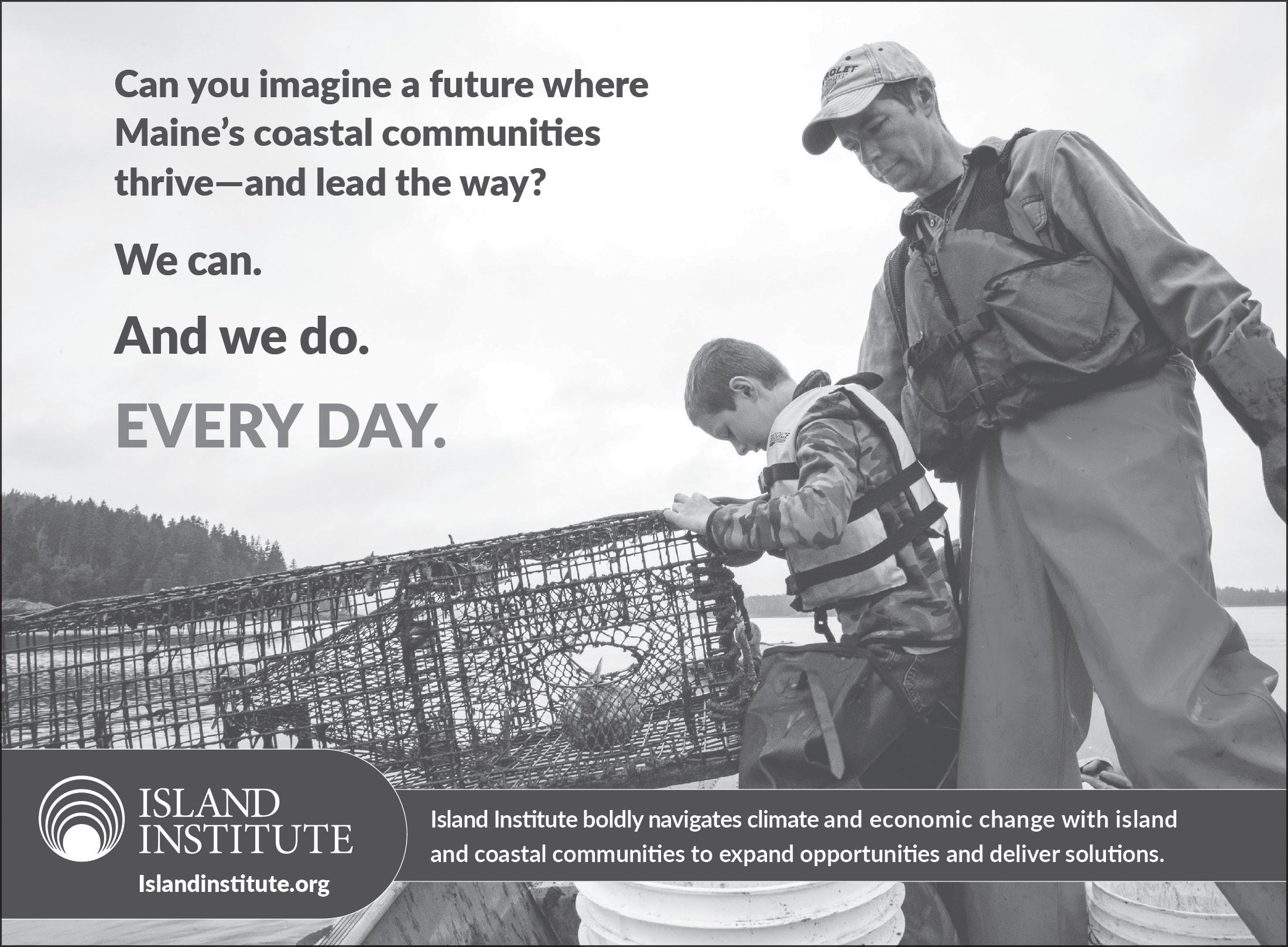
book reviews
A man’s love affair with airplanes
The late Jim Rockefeller’s columns show passion

From the Cockpit: Selected Writings by James S. Rockefeller Jr. From Strut & Axle, Owls Head Transportation Museum Journal 19792013 (June 2025)
REVIEW BY TINA COHEN
JAMES S. ROCKEFELLER JR. (also known as “Pebble”) who died in January was one of the founders (along with Tom Watson Jr. and Steve Lang) of the Owls Head Transportation Museum. Essays by Rockefeller in From the Cockpit: 1979-2013 were selected by his sister Nancy Copp and published as part of the memorial events at the museum in June.
The book’s contents are primarily from Rockefeller’s somewhat folksy, almost familial reports, columns called “From the Cockpit,” with updates about the museum. By 1982, with an expanded readership, the newsletter also grew and became Strut & Axle, a quarterly publication for members, still introduced by Rockefeller.
John Bottero, the museum’s current executive director says of the compilation: “Jim’s writing was able to capture the museum’s gathering momentum
with words that others could not express.” His “From the Cockpit” columns “set the tone for each edition, engaging readers from the start. His unique ability to bring out the best in everyone around him was illustrated by inviting others to contribute the articles that filled the pages.”
Testimony to the magazine’s excellence, it was awarded a National Association of Automobile Museums award for best magazine in 2019.
“The award underscores Strut & Axle’s essential role in advancing the museum’s mission to educate the public about transportation history,” Bottero wrote.
You might detect in his essays a kindred spirit shared with the highly imaginative children’s book writer Margaret Wise Brown, best known for Goodnight Moon, published in 1947. In 1952, the two met and their whirlwind romance and engagement included time together at Brown’s island house on Vinalhaven.
Shortly after that, Brown visited France on a book tour and died there of an embolism following emergency surgery, while Rockefeller was with his boat in the Caribbean. He afterwards called Maine home, buying a farm in Camden where he had a landing
strip and barn for work on planes and antique cars.
A spring 1981 entry describes how the museum would come to life in anticipation of summer’s busyness. In his poetic and playful description, he writes: “Dear Members and Friends: Big news! We have smelled a skunk cabbage, lashed out at a black fly, and caught our first trout. Can summer be far behind? Even that old grump, the Talking T, has contracted spring fever. At his recent start-up, he stated archly, ‘When I talk, children listen.’”
He continued: “The museum is about old things—nice, old, significant things, not just old things for the sake of being antique. Yet ‘oldness’ is only a part of the picture—the smaller part. Looking around this impressive display building now, in the early spring with no one here, everything is quiet and still.... The planes and cars and carriages seem impersonal, a dimension apart from our workaday world. But in the summer, when people are here, when everything is running, when the volunteers come back in force, then you can feel energy flowing into the place. The barrier between man and his inanimate machinery breaks down…
“So the museum isn’t just about old things; it is about… a renewal
Outside, looking in on Maine coast
Novel turns on insular nature of small towns

BY
REVIEW
Everyone Knows But You: A Tale of Murder on the Maine Coast
By Thomas E. Ricks; Pegasus Books (2024)
DANA WILDE
EARLY IN Thomas Ricks’ novel
Everyone Knows But You, FBI agent Ryan Tapia goes into the local diner on Liberty Island to begin a murder investigation.
The Fisherman’s Pal, as the diner is called, is bustling with breakfast. Ryan sits at the counter, where the waitress aggressively ignores him.
We already know Ryan is new to his posting in Bangor and has been clued by his FBI predecessor to the fact that the locals regard both law enforcement and strangers with suspicion. He has arrived expecting to feel like an alien. And does. So he puts on his imperturbable G-man face and overhears about a page worth of scene-setting snatches of conversation.
“Hey numbnuts, your truck is blocking mine on the wharf.”
“Bought that new floating rope, I think it parts too easily.”
“Goddam federal regulations. F— the whales.”
By and large these exchanges sound pretty authentic, as if they were sentences that had actually been overheard in, say, Stonington, and maybe recorded in a notebook for use in a novel.
As the waitress keeps ignoring him, Ryan gets a little rattled. What had he done wrong?
He is bailed out of the predicament when a paternal-seeming fisherman cajoles the waitress to cut Ryan a break and get him a cup of coffee, slyly pointing out, “He’s from the government.”
Ryan is surprised the fisherman knows this. They strike up a conversation that starts to shape the mystery surrounding the discovery of Ricky Cutts’ body in shallow water outside town.
This scene in a way carries the main theme of the entire book: Maine coastal towns are so socially insular, they are almost impenetrable by people from away, no matter how close the stranger seems to get.
Starting with almost no clues (adjectival form: clueless), Ryan proceeds to interview a cast of characters on the island (which the book’s map shows is fictionalized Deer Isle).
Early on there are some pretty uncharitable caricatures of local people, including Ricky Cutts’ disaffected,
poverty-stricken teenage daughters. Ryan interviews two of the girls’ teachers, a pair of somewhat neurotic twins that the narrator, via Ryan’s internal monologue, refers to with more or less unabashed condescension as English Fitch and History Fitch.
The high school principal is a small, pale man of indeterminate middle age who crumples when Ryan gently bullies him. The chapter closes with “silent tears … rolling down the man’s cheeks.”
I guess this is supposed to be funny, in the time-honored tradition of localyokel jokes.
Sketches of other characters encountered by Ryan seem less patronizing. There’s a well-off but quirky retired CIA agent who lives in a secluded cottage. A pot-smoking forest ranger. Some stereotypically taciturn Native Americans of unspecified tribal affiliation inhabiting an island called, puzzlingly, “Malpense.” A drug-dealer who has finagled the blessing of the community’s well-organized, vigilante upholders of community values.
Did Ricky Cutts get himself killed by wandering into dangerous commercial ventures his skinny, white, low-rent fisherman’s ass could not navigate?
Ryan doesn’t know. And he spends most of the story making hardly a
each year of our love affair with these beautiful vehicles that are both romantic and exciting, yet suggestive of lasting values…”
Rockefeller saw the world as most meaningful when shared. His leadership stood for the benefits of supporting one another and working together. His writing not only celebrates relationships but also contains expert and enticing descriptions of planes and automobiles in the collection, with explanations of their historic claim to fame. Many illustrations, especially photographs, are included.
I think of his writing as love letters to the museum, paying tribute to the volunteers, donors, visitors, and members, the educational collection assembled there, and the skills of assembly and repair on view. Even for an outsider to the subject, there is a contagious enthusiasm and pleasure in the opportunity to learn more about “these old things.”
Copies of From the Cockpit are available for purchase at the Owls Head Transportation Museum, open daily year-round from 10-4, closed some holidays (owlshead.org).
Tina Cohen is a therapist who spends part of the year on Vinalhaven.
dent in finding out, partly because he’s got problems of his own that include the FBI boss in Portland, but mostly because no one wants to tell him directly what’s going on. Apparently, everyone knows but him.
Ryan and the narrator’s condescension toward the minor characters early in the story provides part of an answer to his question in the diner. There’s striking irony between the outsider’s understanding of “pre-industrial” Maine (as the narrator smugly describes the setting Ryan finds himself in) and that same outsider’s bewilderment about what he’s gotten himself into. If you visited a Maine town with your notion of its backwardness competing with its actual reality, you’d spend a lot of your time confused.
An old local joke: A gussied-up tourist wanders into a coastal village, spots an old guy on the streetcorner and asks, “Is there any entertainment around here?” The old guy says, “There is now.” Nothing is what it appears to be, including the confident narrative of this story. If you want an inside peek at how outsiders don’t understand Maine, read Everyone Knows But You.
Dana Wilde is a former newspaper editor and college professor who lives in Waldo County.
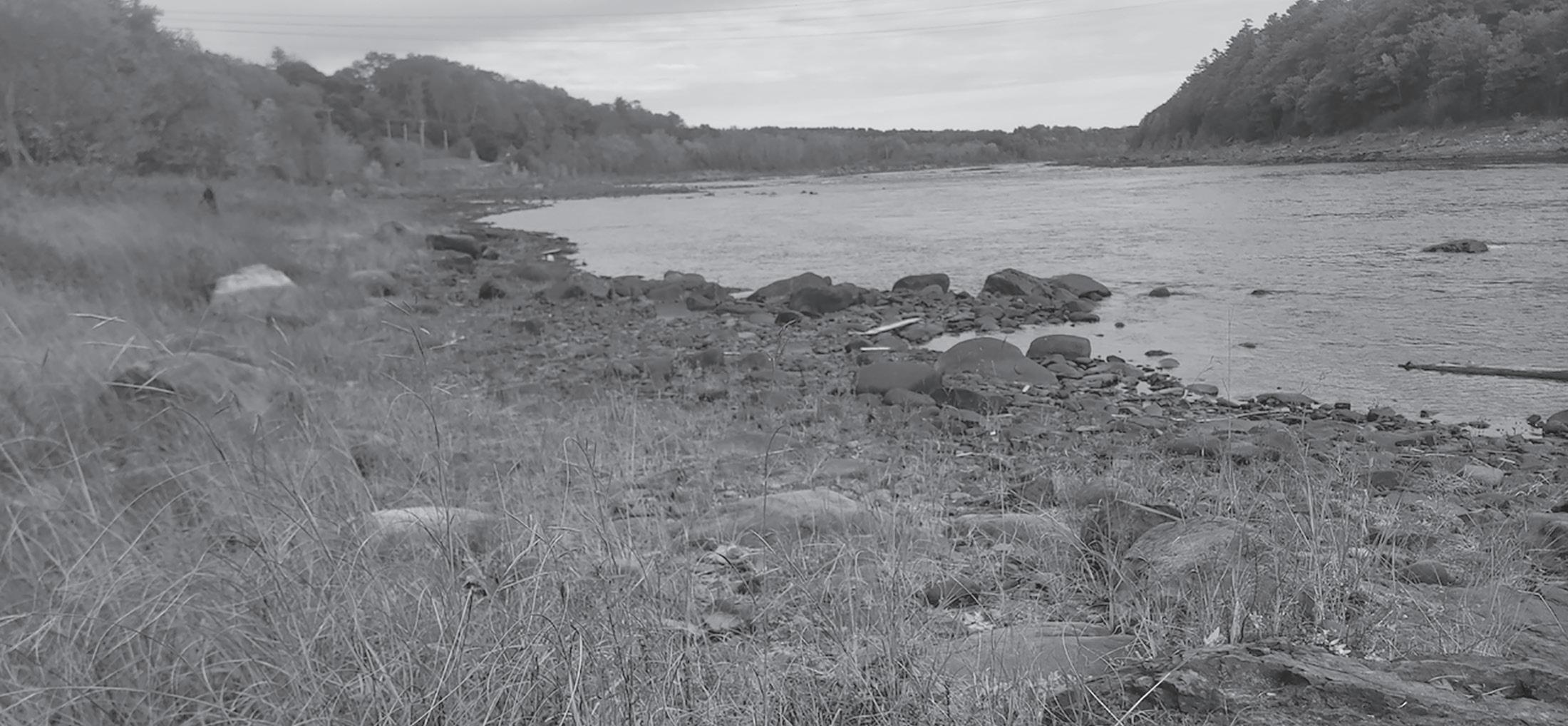
The meaning of sustenance
How Wabanaki access to sea run fish is changing
BY CATHERINE SCHMITT
For thousands of years, Wabanaki people were sustained by “sea run” fish that moved between rivers and the ocean. Fish evolved this migratory strategy to ensure they would reproduce successfully, but it also resulted in abundant and nutritious food for people, as hundreds of thousands of salmon and millions of shad, river herring, eels, and other fish traveled along shore and between river banks.
In the last few hundred years, Wabanaki people lost access to their traditional fisheries and fish populations declined. This story is told by tribal citizens in a report published by the Maine Indian Tribal-State Commission, released in audio format at an event on Indigenous Peoples’ Day in October.
Robert Polchies, MITSC commissioner from the Penobscot Nation, opened the gathering outside the Veazie Salmon Club with seven breaths to slow down and a prayer. Lauren Stevens sang “The Humbling Song,” her Passamaquoddy words drifting over the Penobscot River rapids.
MITSC is charged with monitoring the effectiveness of the 1980 Maine Indian Claims Settlement. Among other provisions, the settlement acknowledged the rights of tribal members to harvest fish within reservation boundaries. According to the report, entitled “Sea Run,” the confirmation of tribal fishing rights in 1980 did not offer much because of the limited access Wabanaki people had to their ancestral fishing grounds, and the low quality and quantity of fish, a situation that continues today. Atlantic salmon have been on the endangered species list for more than two decades, and fewer than 800 were counted in Maine rivers in 2025. Other fish that are abundant enough to be harvested
are contaminated with mercury, PFAS, and other chemicals, making them dangerous to eat.
“The Penobscot River is our cultural identity and at the very core of who we are,” said Kirk Francis, chief of the Penobscot Nation. “It’s extremely difficult to be Penobscot without a healthy river.”
In agreement with other assessments by federal and state agencies and scientists, the report identifies dams and pollution as the leading factors contributing to declining fish populations.
But authors Judson Esty-Kendall and Anthony Sutton also noted the role of state policies, “whether witting or unwitting,” that inhibited Wabanaki fishing rights and ignored Wabanaki voices. That’s why the authors relied heavily on interviews with tribal citizens, narrated in the audio version by Dawn Neptune Adams, Penobscot; Sue Desiderio, Maliseet; Dale Lolar, Penobscot; and Dwayne Tomah, Passamaquoddy.
“ The numbers of fish are not yet as robust as was hoped, and the challenge to render those fish edible for human sustenance remains.”
Esty-Kendall said he learned a whole new way of looking at Maine’s history through the eyes of the fish, and the Wabanaki people: “It is a story that needs to be told, and needs to be learned.” He described his own personal experience of fish, of being with his grandchildren at the edge of Pushaw Lake watching schools of young alewives, a sea-run species that had declined but has since been restored to numbers again in the millions.
“It’s happening,” he said. “It will take a long time, but it’s happening.”
The report text was less optimistic, noting that while collaboration and “respectful, honest negotiation” have increased fish populations, “the numbers of fish are not yet as robust as was hoped, and the challenge to render those fish edible for human sustenance remains.”

Views differ on the meaning of “sustenance,” which is a term used in Maine law that has no translation in the Wabanaki languages. MITSC recommended further discussion on what is meant by “sustenance.” To support learning and shared understanding, the commission has been awarded a Native Voices Rising grant for statewide education efforts. It also plans to identify and replicate examples of tribal-municipal collaboration for fisheries restoration, said MITSC Executive Director Jill Tompkins, a citizen of the Penobscot Nation.
After the songs and speeches, people mingled next to the river and went inside the clubhouse to get warm. They looked at the wooden walls crowded with displays of flies and rods, and photographs of fly fishermen and their big, silver salmon. Many of those anglers kept and ate their catch, but their sustenance, their traditions, also ended as the fish declined.
The broader impacts of restoring Wabanaki lifeways were highlighted in another report, “Sovereignty Starts Here,” released at the same time by the Maine Center for Economic Policy. “Maine’s future prosperity is tied to justice for the Wabanaki Nations,” wrote James Myall. “Returning public lands to Wabanaki stewardship would both honor history and strengthen Maine’s economy.”
“I don’t look at fish as a problem for just the Passamaquoddy or the Wabanakis,” said another Passamaquoddy citizen interviewed for the “Sea Run” report. “I think it’s just people as a whole, and I think if we have a healthy population and sea-run fish, everyone and everything is going to benefit.”
Catherine Schmitt is the author of The President’s Salmon: Restoring the King of Fish and its Home Waters.
A season for readying
Preparing for the winter slowdown on Islesford cranberry report
BY BARBARA FERNALD
I THINK OF late October and early November as the “readying season.” We learn to adjust our timing and be flexible with changing arrangements. The mailboat, on its winter schedule, runs three boats a day between Northeast Harbor and the islands. Road construction has picked up on the mainland and the last mailboat now leaves an hour earlier. Planning errands takes some extra strategy. If you miss the 3:30 p.m. boat, the Cranberry Cove ferry runs a commuter at 5:00 p.m. They also run the morning commuter at 6:30 a.m. which carries students and people who work offisland. For months, some islanders will both leave and return in the dark. It’s not all bad. I’ve witnessed some spectacular sunrises from that boat. The sunsets now belong to those on 3:30 p.m. boat.
The floats have been taken out at the town dock. We adjust to using the side stairs to board the boat. It’s a seasonal marker that comes with both dread of slippery steps and anticipation of ease as
many hands help to unload the boat by passing grocery bags and freight, hand to hand, up the stairs onto the dock. On Great Cranberry they avoid this transition because the mailboat lands at their steps all year long.
On a cold windy day in late October, I reach for gloves to wear on a walk. I grab a blaze orange scarf to tie around my arm or neck. Everyone we encounter wears some version of orange. It’s deer hunting season, and we stick to the roads. I’m happy to say that no deer go to waste. Filling the freezer with venison is one approach to being ready for winter. By the time hunting season ends, a number of the fishermen will have taken their lobster traps out of the water until early spring. As I write this at the end of October, Bruce has only 200 out of 800 lobster traps left to bring ashore. It has not been a banner season,
and several fishermen have brought traps in earlier than usual.
I’ve ordered a 50-pound bag of flour through the co-op. Maybe this will be the year I master baguettes!
For Bruce and me, part of getting ready for winter is making plans for what to do with all of the time off. We have a new shed that we’ll insulate and finish off for a guest cabin. I have rooms to paint and plans for work in the studio. Several closets are due for cleaning and organizing. I’ll make a list of books to read, guilt-free, by the fire. When we want to go somewhere, our grandkids live only 3 1/2 hours away. I am so lucky that during my husband’s 5-month winter retirement from fishing, he enjoys cooking and trying new recipes. Just yesterday Bruce wanted to make something different for dinner. He asked if we had the ingredients for coconut-poached salmon with corn and dill. Yes please! I had just picked up salmon and I usually keep coconut milk on hand. Before winter hits I try to get my cupboards and freezer well
journal of an island kitchen
Why serve baked beans in summer?
Eating out looks different on an unbridged island
BY SANDY OLIVER
SOME PEOPLE doubted anyone would want to eat baked beans in the middle of summer.
On Islesboro, the Masons do a ham-and-beans supper on the fourth Tuesdays of September through May. There’s mac and cheese, coleslaw, tossed salad, rolls, sometimes hot dogs, desserts including cupcakes, cookies and sometimes chocolate or blueberry pie, and different sodas. The Masons offer standard beans with salt pork. Some pots are sweeter than others, and there is always a vegetarian—yeah, even vegan—option. The fee is reasonable; one can rub elbows with neighbors and dine at long tables or to-go.
This summer, though, the Up Island Church organization (which preserves the former Free Will Baptist Church building) took on the three suppers from June through August with the blessing of the Masons whose members, with the exception of a few retired folks, spend the summer largely on a dead run keeping the island community functioning.
Well, guess what? People came and ate ham and beans at the up-island church. Best of all, many year-round and summer folk alike made the mac
and cheese, coleslaw, brown bread, desserts, and all to go with them. It was delicious and fun!
While I don’t need to be convinced to eat ham and beans any time of the year, I did wonder why these and other suppers were so popular.
First off, Islesboro doesn’t have a restaurant.
We have a food truck out by the ferry terminal in summer, and another one operates into the shoulder season, stationed close to the center of town near the post office, Baptist Church, and Community Center. Billy’s ice cream shop provides wonderful sandwiches and treats from Memorial Day to Labor Day, and both island stores have hot and cold take-out. As long as you call enough in advance, you can order pizza. The Tarratine Club serves its membership at a white tablecloth restaurant at the golf club and, less formally, lunches and dinners at the yacht club building.
That’s it.
chicken tenders, wings, and onion rings. The community center invites island cooks to present dinners, often ethnic-themed ones, on some Saturday nights; and the Baptist Church has comfort food lunches at least once a month. Oldsters and work crews alike show up. Members of the junior class are always laboring to raise thousands for their senior class trip by serving up yards of lasagna.
There’s no particular affinity that brings us together, even a love of beans, except a desire for connection...
Thing is, for most of our cooler months, we eat out when it is offered. In January, there is no such spontaneous thing as, “Oh, honey, I’m too tired to cook. Let’s eat out tonight.”
“We need a restaurant (and bar) out here,” is a frequent refrain, as I suspect it might be on many unbridged islands.

stocked. I’ve ordered a 50-pound bag of flour through the co-op. Maybe this will be the year I master baguettes! Windy, snowy weather will inevitably cancel ferries and rearrange plans. I won’t have to leave the island as much in winter if I spend time in the fall getting ready. I’m so grateful that I get to live on Islesford where I feel the most settled and ready to deal with life on life’s terms, no matter the season.
As this is the last column of the year, I want to say thank you to everyone who reads The Working Waterfront and especially to Tom Groening for being such a great editor for 12+ years. Happy retirement! May you all have a happy Thanksgiving, experience some serenity in the December holidays, and find more peace and joy in 2026.
Barbara Fernald lives on Islesford (Little Cranberry Island). She may be contacted at fernald244@gmail.com

So what is it that brings people out besides being too tired to cook, or not liking it, or hating to do dishes? At Tuesday’s bean supper, I asked attendees why they showed up. The frequent response was, “I came out for the people here, and to support the Masons.” Community, in short, is more important than the menu.
So other groups step in. On Thursday evenings the Sporting Club satisfies the town’s hankering for burgers, fries,
A quick survey shows that except for the high season when most islands have at least a cafe, Vinalhaven seems best equipped to offer commercial options for breakfast, lunch, and occasionally dinner. It helps to have a population of more than a thousand souls.
Turned out that particular Tuesday was local fire chief Murt Durkee’s birthday. Close to 60 sang him a happy birthday. What a mighty sound rose up. Mike Clayton, head of the Masons, offered ham bones to anyone wanting to make soup, pea or otherwise. Folks lingered over bean-smudged plates, conversing. There’s no particular affinity that brings us together, even a love of beans, except a desire for connection with one another and a belief that our organizations have great value. What a wholesome thing in a troubled time.
Sandy Oliver is a food historian who cooks, gardens, and writes on Islesboro. She may be contacted at sandyoliver47@gmail.com.
saltwater cure
Stars in the sky, stars in the sea
An evening boat ride brings a cosmic light show
BY COURTNEY NALIBOFF
AS AN EMT, I have found myself on a boat in the middle of the night more frequently than the average person. The medevac trip to Rockland is occupied by patient care, but the way back can be a peaceful, quiet time.
Weather and temperature permitting, I’ve spent some pleasant moments on the stern as we steam back to North Haven, and on a clear night, it’s the best place to look at the stars.
It occurred to me this summer that it would be exceptionally pleasurable to go for a nighttime boat ride when there isn’t an attendant medical emergency, and particularly if there were some sort of astronomical phenomenon to view. I floated (pun intended) the idea past one of our medevac regulars, whose sleek and lovely Axopar is my favorite boat, and he was on board. After checking various astronomy websites for intel, we scheduled a 10 p.m. cruise to coincide with the beginning of the Orionid meteor shower’s peak in mid-October. There’d be no moon to dilute the view.
I’m blessed with friends who think my ideas (Let’s swim a 5K! Let’s start a punk band! Let’s get on a boat at 10 p.m. on a school night!) are fun,
so another eight folks—four kids including mine and four adults— boarded the boat that night. It had been hazy during the day, and I almost canceled, but at 8:30 p.m. the skies had cleared, and so, bundled in Snuggies and hats and blankets and clutching a thermos of peppermint tea, we departed.
As we glided down the thorofare, leaving the lights of the town parking lot and the ferry boat behind, the sky overhead came into sharper focus. I lay back on the cushioned seat on the stern. The densely dotted stars glittered, punctuated by the steady glow of Jupiter and Saturn, with our view unimpeded by trees. Soon, the lightshow was echoed by sparks in the spume thrown by the boat.
were perfectly positioned towards Betelgeuse, Orion’s red shoulder, which was just starting to rise above the tree line. The meteor shower would radiate outwards from there.
Another meteor, this one certainly an Orionid, zipped through the sky. The bioluminescent boat wake flashed in answer...
“Bioluminescence,” said a friend, pointing it out to me.
As we rounded the back side of another island, the sparks expanded to glowing patches. We tied off to a buoy, the rope shedding points of light as it was hauled out of the water. We
When we’re really loved
A
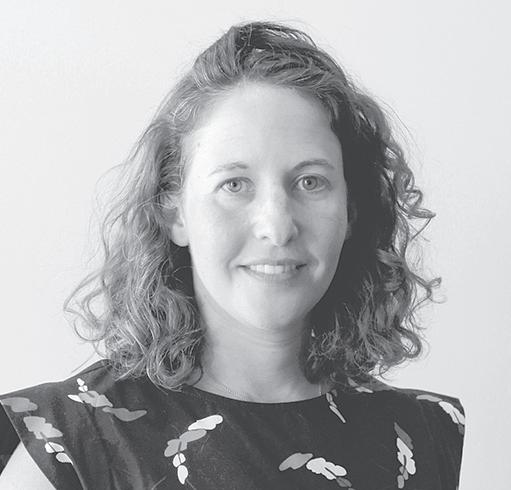
Some matters of scale became apparent as we bobbed in place. The sparking plankton, measuring at 30 microns, were about 1/50,000th of my size. The whole earth is 1/60 trillionth of Betelgeuse. We were giants and we were infinitesimally small.
We talked about physics and constellations and fears as we waited for Orion to emerge, in pursuit of Taurus and pursued by Scorpio. We practiced finding Polaris, looked sideways at the Pleiades to make them pop into focus, and searched in vain for Comet Lemmon. Several meteors, including one particularly slow and bright one, burned across the sky, although none from the supposed epicenter of the shower. Some of the
child’s science class brings larger questions about community observer
BY PHIL CROSSMAN
WHEN MY DAUGHTER was about 10, she came home from school, having attended something called “pre-pooh class,” a precursor to puberty class. She was somber and circumspect.
“Sweetie,” I said, “why don’t you tell me what you learned today. Start at the beginning.”
“OK. When a man and a woman fall in love, like you and mom did, and sometimes even when they’re not in love but are just interested in seeing if they’d like to be, they might touch each other, and it’s not the same as when a boy on the playground punches me in the arm. Know what I mean?”
“Yes dear, I do.”
“OK, so when you and mom fell in love some of that happened and I was born. When it started, I was just a semi-colon.”
“You’re losing me sweetie.”
“A woman produces an egg every month or so and sends it down to the fallopian tube to see if there are any little visitors. Little visitors are sperm that a man might have put there
because of touching. Even though the woman only produces one egg, there are thousands of little visitors trying to get to it. Miss Fricke said that a good way to think about an egg being fertilized is to think of a semi-colon. The egg is round like the top half of the semi-colon and the sperm has a little tail like the lower half, so a semi-colon reminds her of a sperm heading upstream to the egg.”
“Let’s talk more about love. What about love do you understand?”
“Well, I know you love me, and I know mom loves me, and I know I love both of you, and we all love Gram and Gramp and Alice and Maurice [cat and dog].”
“Happy Valentine’s Day, Mr. Fess,” she said and passed him the card and then gave him a hug.
“Well, we do say ‘I love you’ all the time, but how do we know when we are really loved or really love someone?”
“I know you love me because you tell me every night when I go to bed and I can just tell you mean it, and I know I love you and mom because if anything scares me and I can’t get to sleep, I think about how good it feels to love you both and whatever was bothering me stops. But some people don’t have love at all.”
“Like who sweetie?”
“Like Fess, the man who sits on the shore behind the post office, doesn’t have love. I don’t know what to do about Fess. He’s kind of scary.”
“What would you like to do?”
“I’d like to give him something like a Valentine card.”
“Want me to give it to him with you?”
In a few minutes we were headed down over the hill to town with a big hand-colored Valentine card. I walked on the outside, she on the inside, her left hand holding my right,
kids started to sing, softly. We could just make out the words to a Chappell Roan song.
I could have stayed ‘til the sun came up. The air was cool, but not frigid; the light breeze didn’t trouble us. But it was a school night, and the younger kids were starting to fade. At 11:45 p.m., keeping Orion perfectly framed over the stern, we headed back. Another meteor, this one certainly an Orionid, zipped through the sky. The bioluminescent boat wake flashed in answer, stars in the sea telegraphing a message to those in the sky.
The scene would have been identical without us there to observe it, minus the agitation of the water. But how precious to have been there, how fortunate we were, to have each other and a beautiful boat, a dark sky, a calm sea.
Courtney Naliboff teaches, writes, and plays music on North Haven. She may be reached at courtney.naliboff@gmail.com.

her right hand clutching the card. She walked up to him purposefully but didn’t let go of my hand.
“Happy Valentine’s Day, Mr. Fess,” she said and passed him the card and then gave him a hug.
He hugged her back a little and said, “Thank you, Katie.” We headed back up the hill.
“I didn’t know he knew me,” she said.
“There are only 1,200 people on this island sweetie. They’ve had 4,000 days to get to know you or know about you. Believe me, everyone in your town knows you and cares about you; many love you. When you’re grown-up and know them all, you’ll feel the same.”
Phil Crossman owns the Tidewater Motel on Vinalhaven. He may be contacted at philcrossman.vh@gmail.com.
fathoming
Changes below—Can wild kelp survive?
Important habitat is at stake with changes
BY SUSIE ARNOLD
“CHANGE IS the only constant.”
That’s one of the memorable sayings of my graduate school advisor, Dr. Bob Steneck. I started my career in Steneck’s lab, researching how the abundance and composition of seaweeds on Caribbean coral reefs can make or break the start of life for baby corals.
As I was working on my thesis, “Running the gauntlet to coral recruitment,” my colleague Dr. Doug Rasher, now a senior research scientist at Bigelow Laboratory for Ocean Sciences, was studying cold water seaweeds and their role in temperate ecosystems. Our paths crossed at UMaine’s Darling Marine Center, where Rasher did his post-doctoral studies with Steneck. Since then, Rasher has been tracking changes in the make-up of seaweeds in the Gulf of Maine.
Nine years ago, I interviewed Rasher’s student, Dr. Thew Suskiewicz, a former technician in the Steneck lab, and now phycologist at Atlantic Sea Farms, Maine’s first farmed kelp processing company. I hope by now you’re picking up on Steneck’s contribution to training marine ecologists in Maine (see the interview with him in this issue).
Again, times are changing. Climate change is “rewriting the rules of nature” as Rasher, Suskiewicz, Steneck, and colleagues wrote in 2024 in the journal Ecology. Now Rasher’s team is seeing a shift from kelp to turf algae, progressing up the coast as the Gulf of Maine warms. Kelp forests have largely collapsed in the south, with the boundary of that shift currently around Penobscot Bay.
“Over the last five years, this shift has continued to unfold right before our eyes. In the Midcoast, our sites were kelp one year, and turf the next,” Rasher said, describing the flip he and his students observed.
For those who are not seaweed buffs, kelps are large, canopy-forming, brown macroalgae that provide important habitat and food resources for numerous marine organisms. “Turf” algae, on the other hand, refer to small, carpetforming red (in this case) algae. The shift triggers a loss of animal habitat. For lack of a better analogy, think of a forest shifting to short crab grass.
The consequences of such a shift aren’t fully understood, but what we do know isn’t good. Kelp forests provide a number of ecosystem services, and the more biodiverse the composition of kelps the better.
reflections
Kelps grow quickly, taking up nutrients and carbon dioxide. They fuel nearshore food webs, providing energy to fish. Wild kelps also supply the seeds for kelp farms.
The species of turf algae that are taking over may decrease oxygen on the seafloor. Additionally, these turfs create a different chemical and microbial landscape, one that can actually inhibit the survival of new kelp. So, similar to baby corals requiring a hospitable nursery habitat to successfully regenerate a tropical coral reef, baby kelps also require a seafloor that is not hostile.
There are steps we can take to bolster the resilience of remaining forests, which still cover over half of the expansive Maine coast, mostly to the east of Penobscot Bay. One important step is to ensure that sea urchins remain rare in the ecosystem, to prevent deforestation.
Rasher also promotes the idea of “fortifying the front lines” where turf algae are encroaching. In addition to mitigating warming, improving the receptivity of the seafloor for kelp restoration would help. He and a group from Maine recently visited Portugal to learn about kelp restoration efforts that are currently underway.
From my perspective, whether it’s a coral reef or a kelp forest, ensuring
Finding home within home rule
Contentious
Reflections is written by Island Institute Fellows, recent college grads who do community service work on Maine islands and in coastal communities through the Island Institute, publisher of The Working Waterfront.
BY EMERSON WESSELHOFF
IT WAS TWO HOURS into a meeting that normally runs a tight 90 minutes when a selectboard member asked to lower the temperature of the room. He wasn’t talking about the thermostat.
At a recent Damariscotta Select Board meeting, the public heard a proposal for a joint public works department between Damariscotta and neighboring Newcastle. Both towns have been working together to visualize what services, logistics, and multi-year financial models might look like for such a project, including shared snowplowing.
As attendees shared their concerns, it became apparent that opposition to the joint department was based on the idea of Damariscotta residents paying taxes towards Newcastle projects. My fellowship working with the town of Damariscotta to implement its new comprehensive plan began this September. I hadn’t known about “home
rule,” Maine’s constitutional authority allowing towns to make decisions on matters that don’t conflict with state or federal level policy until I moved here.
Yet with the public works departments, home rule was alive and well, keeping towns politically and financially distinct, but also valuing local voices.
At this meeting, the Damariscotta and Newcastle town managers explained what collaboration could mean, while residents whose families have lived here for generations also voiced their concerns. Although I would have loved a clear-cut answer, home rule didn’t dictate which view mattered more. Instead, something far more important came to light: that home rule established a sense of place and pride in Damariscotta, strong enough to encourage both community residents and their town officials to participate in the civic process.
Home rule established a sense of place and pride … strong enough to encourage both community residents and their town officials to participate...
department. I don’t have enough context yet. I haven’t seen the complete financial calculations, and I understand how the numbers might not work. I also recognize that I haven’t wintered here and haven’t yet spun my tires in the snowpack.
I am, as some say, from away. Would I have to work against that label for my entire fellowship? But what if I worked with it instead?

that the broader public has a glimpse into the beauty and function of these important ecosystems is a first step to their preservation. A documentary called Sea Change: Peril in the Gulf of Maine, recently on the PBS show NOVA, features a beacon of hope.
Cashes Ledge is a submerged mountain range, 80 miles off the coast, known to marine scientists, fishermen, and others to have lush kelp forests supporting a wide array of marine life. Rasher and his colleagues visited Cashes to assess its health, as part of the documentary.
“Cashes is a place that has displayed remarkable resilience, even in the face of rapid warming,” Rasher says. “It also harbors a food web that looks fundamentally different than the coast, with an abundance of fish including important kelp forest predators like Atlantic cod. It’s an awe-inspiring place, and one that can teach us what to strive for on the Maine coast.”
Susie Arnold is senior ocean scientist at Island Institute, publisher of The Working Waterfront. She may be contacted at sarnold@islandinstitute.org.

plan, but because I saw the potential in myself to find a home and to truly love this place.
I realized that everyone who showed up to that contentious meeting had already achieved that potential. Both town staff and residents spoke clearly and with conviction, but what really mattered was that they were speaking at all—that they loved their home enough to advocate for it, and to participate in public engagement. Perhaps that was another basis for home rule; perhaps that was a way I, too, could call Damariscotta home.
To be clear, I am neither supporting nor opposing the proposed shared
The phrase itself leaves out something vital: a person might indeed be from away, but where are they now? I am writing this at my desk in the Damariscotta Town Office. I walked here from my apartment downtown, waving hello to the heron which fishes in the river below my window. I’ll return my books to Skidompha Library on the way home. I am from away, yes, but I came here not only because I saw potential in Damariscotta and its comprehensive
The select board decided to explore a joint public works department. It may or may not come to fruition, but I’ll have the privilege of finding out. I’ll keep showing up at meetings in this new home, and learn from my new neighbors because I might be from away, but I’m here now.
Emerson Wesselhoff works with Damariscotta’s town manager and town planner implementing the recently passed comprehensive plan. She also works with Newcastle and Edgecomb.
in plain sight
A fishery transformed by canning
Canning unlocked new markets for Maine lobster
BY KELLY PAGE
FOR GENERATIONS, the lobster fishery has been a cornerstone of Maine’s economy and a defining element of its cultural identity. Lobstering is a tradition deeply woven into the fabric of coastal communities. Yet the story of how lobster became a widely consumed product is not just about flavor, but also an era of innovation and industrialization.
In the early days of the commercial lobster fishery, the market was limited due to the crustacean’s highly perishable nature. Unlike cod and other finfish, lobster meat could not be dried, salted, or smoked in a way that preserved its flavor and texture. This made long-distance transport and storage difficult, restricting lobster’s reach outside of local markets.
To extend the shelf life of live lobsters, vessels known as “smacks” were outfitted with wells—essentially onboard tanks that allowed access to fresh seawater to keep the lobsters alive. This innovation enabled distribution to urban centers across the Northeast. However, the breakthrough that truly brought lobster to a wider audience was canning. Lobster became one of the first foods to be commercially canned in the United States,
FIELD NOTES—
transforming it from a regional delicacy into a global commodity.
By 1840, lobster canning had become established, though it wasn’t until decades later that the scale of the industry became clear. In 1880, Maine was home to 23 lobster canneries employing around 800 workers. Ten of these factories focused exclusively on lobster. Together, they produced 1.8 million cans in various sizes—half of which were exported overseas. That year, lobster landings totaled 14.2 million pounds, with twothirds going to canneries. In effect, demand for canned lobster doubled that of the live market.
The peak of the lobster canning era is believed to have occurred around 1870, coinciding with the date of this image of the William Underwood Co. factory, which operated in Southwest Harbor at Clark’s Point. This cannery was established in 1860 and was forced to relocate to Bass Harbor in 1886. Its presence at Steamboat Wharf proved unpopular with ever-increasing tourists, who were greeted by the factory’s unpleasant odor upon arrival. Today, the site is home to a U.S. Coast Guard station.
Although this photograph shows only men, the workforce was predominantly female. Men handled the heavy
Turning to the sun
Battery system will help library, community center
NAME: Skye Butterson-Dunn
TITLE: Community Development Officer
FOCUS: I work in the Center for Climate and Community on the Resilient Energy team at Island Institute, where we support Maine’s island and coastal communities in building energy resilience. We do this through strategic energy planning, forming partnerships with national, state, and local organizations, and helping implement innovative clean energy solutions that strengthen communities in a changing climate.
IN THIS PHOTO: That’s me at right during a recent visit to South Thomaston’s Gilford-Butler Library and Community Center. I met with local volunteers to discuss plans for expanding solar generation and adding a Battery Energy Storage System (BESS)—important steps toward helping the town better withstand power outages.
This work is part of the Island Institute’s Energy Navigators pilot project, developed in collaboration with the National Renewable Energy Laboratory (NREL) and partners Renewable Energy Alaska Project (REAP), Spark Northwest, and the Great Plains Institute. Through this initiative, we provide 10-40 hours of free technical assistance to local entities—from town governments to working waterfront businesses and volunteer organizations—helping them explore practical, community-driven ways to increase energy resilience.
Standing alongside community members shaping their town’s energy future reminds me of what’s most powerful about this work: that through strong partnerships, we can bring big ideas home to Maine’s coast and islands.

lifting and soldering of cans, while women cooked, processed, and packed the meat in addition to labeling cans. Some of the men pictured may have been lobstermen unloading their catch from a schooner just out of frame. Consumer demands for canned lobster drove increased harvests, sparking concerns about the sustainability of the fishery. In response, regulations began in 1879, including laws that restricted the canning season. As the largest lobsters were depleted, more effort was required to catch and process smaller ones, reducing profitability. Meanwhile, improvements in shipping—particularly the use of ice—made live lobsters more viable
for transport, boosting their popularity. These factors led to the decline of lobster canneries in Maine, which had disappeared entirely by 1895, marking the end of a brief but transformative chapter in the lobster fishery. Shifting to other preserved seafood products, Maine canneries continued to thrive well into the 20th century.
Kelly Page is Curator of Collections at Maine Maritime Museum. The museum’s latest exhibit, Re|Sounding, explores under-told stories of Black and Indigenous contributions to maritime heritage. Explore resources and plan your visit at www. mainemaritimemuseum.org

art of the waterfront
Stanley paints a Stanley
Gotts Island artist brings joy to her work
BY CARL LITTLE
LOU STANLEY remembers the day she came across Richard Stanley. Richard was in his father Ralph Stanley’s boatyard in Tremont, working on Westwind, a 40-foot Friendship sloop built in 1902 by Charles Morse. It was late fall, the Saturday after Thanksgiving, “the full sun’s warmth,” she writes, “just barely keeping ahead of the chill in the air.”
The project, the artist notes, was a “labor of love, or act of defiance against the nature of reality,” for the boat had arrived in “not floatable” condition as a rebuild job. With his father Ralph’s eye for proportion and “the kind of brain” that can look at a wreck and envision a beautiful vessel, Richard Stanley sought “to give the boat its shape back.”
In the painting, the determined boat restorer handles a vintage Stanley electric plane that sends shavings into the air. He stands astride a stool, his head bent to the work, the sloop looming over him.
“This is the kind of job that Richard spent hundreds, if not thousands of hours doing, over the 50-plus years he’s worked in boat shops,” the painter explains. People should know that
“pure joy is available to anyone willing to pursue what is meaningful to them.”
For Stanley, that joy comes from painting. With encouragement from several artists, including Joe Paquet, Don Demers, and Mary Erikson, and books like Rick Rubin’s The Creative Act: A Way of Being, Stanley gained the confidence to go out into the world, all year round, to find motifs that spoke to her.
In recent years, her expeditions have taken her to Italy and the Bahamas. Next spring, her painting universe will expand even further, through a residency at Cafe Tissardmine in Erfoud, Morocco, on the edge of the Sahara Desert.
Born Lorraine Strauss on Gotts Island in 1973, Stanley took her first boat ride when she was four-hours old. Not long after, her family drove off in a converted school bus to Houston to see the Maharishi Mahesh Yogi, joining some 10,000 other “hippies and freaks,” as she remembers it. Later, seeking cheap land, they found a farm in Kentucky. In the late ’70s, Stanley’s parents become Jehovah’s Witnesses and the family moved to San Antonio to help spread the word. They eventually left the faith and lived in Rule, Texas, where her mother had grown up.

•
•
MARINE SAFETY CONSULTING LIFE RAFT INSPECTIONS

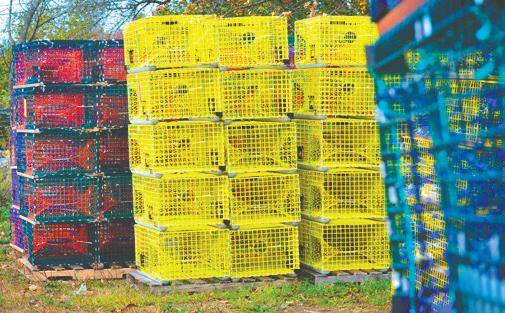
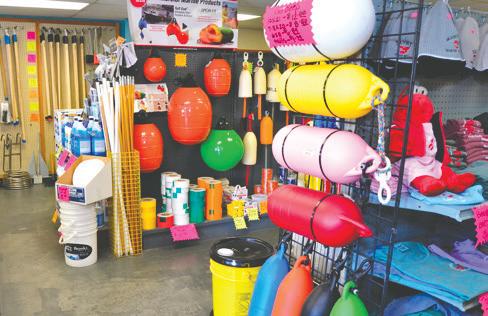
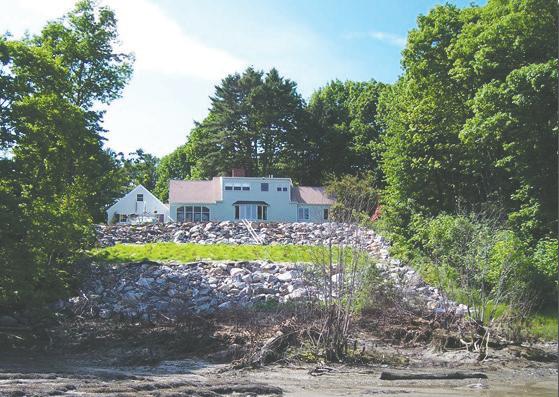
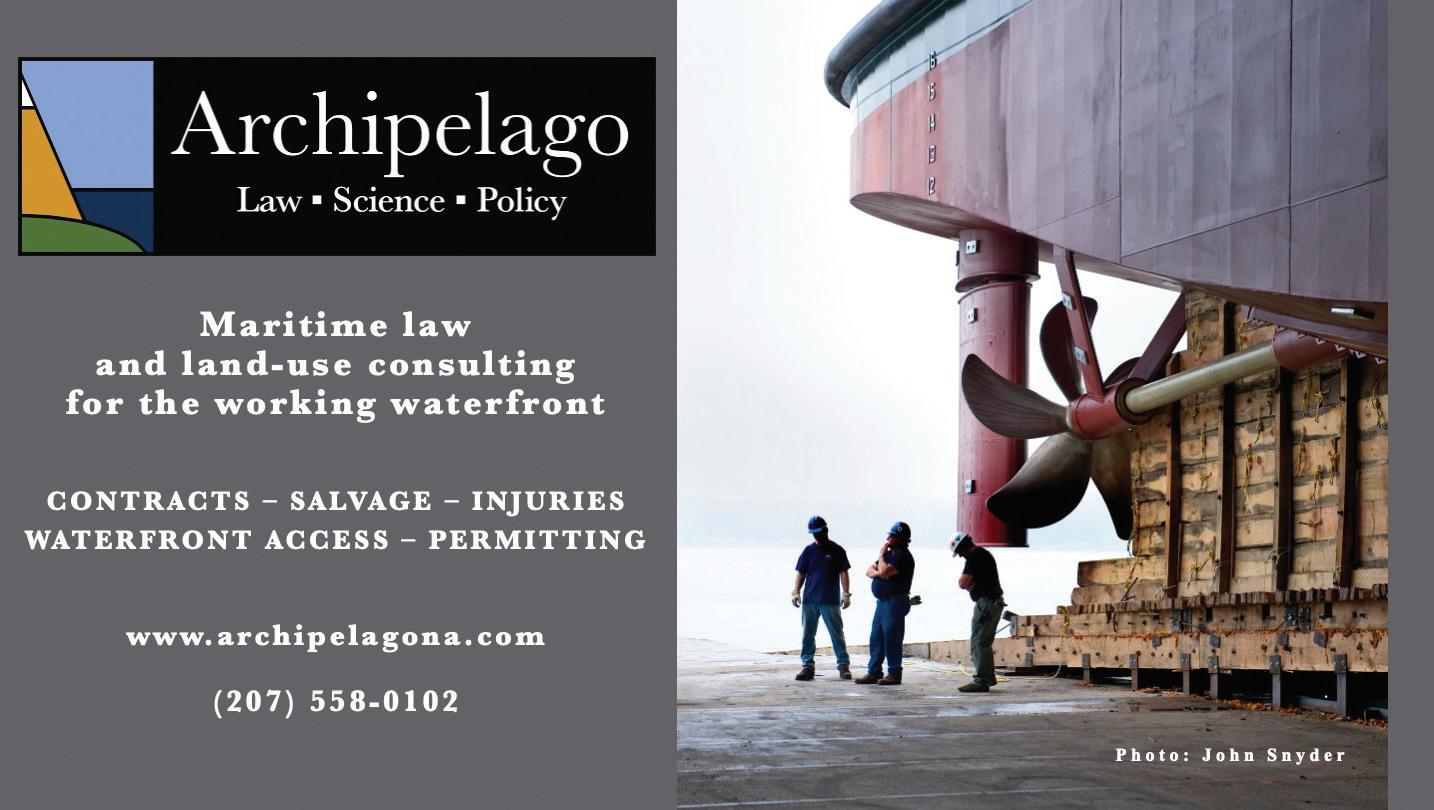
“More old pumps and abandoned farms than Dallas, the TV show,” the daughter recalls.
Stanley entered fifth grade when they moved back to Maine. She attended Mount Desert Island High School where she took all the art classes, including ceramics, photography, perspective drawing, and basic color mixing. She loved art, but was encouraged to write, with help from College of the Atlantic poet/professor William Carpenter. A highlight of those years was the weeklong Summer Art Camp at Bowdoin.
In 1990 she enrolled at Hampshire College where she studied with painter Paul Jenkins; she also took a poetry course with Amy Clampitt at Smith. Abandoning verse, she started writing narrative nonfiction with Michael Lesy, author of Wisconsin Death Trip.
Born Lorraine Strauss on Gotts Island in 1973, Stanley took her first boat ride when she was four-hours old.
Moving to New York City, Stanley worked for another weekly and then at a graphic design company. She tired of city life and returned to Gotts Island in spring 1999 where she met and married Richard Stanley. She started working for his family business, Ralph W. Stanley, Inc., in the fall of 2000, sanding and painting boat bottoms, rigging sailboats in the spring, and doing other boatyard tasks.
Richard talked her into signing up for an intro to oil painting adult ed class taught by Nicole DeSimone at MDI High School. As soon as she started in with the brushes and paint, Stanley recounts, “I felt like I had come home.”
After Hampshire, Stanley moved to Durham, North Carolina, for internships at the Independent Weekly newspaper and the Institute for Southern Studies. She quit that work to become a carpenter’s helper, hand-digging footers, lugging materials, and shingling roofs.
She has come home: she is currently working on a view of Gotts, island of her birth. “I try to stay in the present,” she says, “pay attention, tell the truth, help others, and see what happens next”—a great attitude for life and art.
Stanley shows at The Gallery at Somes Sound. For more of her work, visit www.loustanleyfineart.com.
Carl Little’s profile of poet Gary Lawless appears in the 2025 Island Journal.
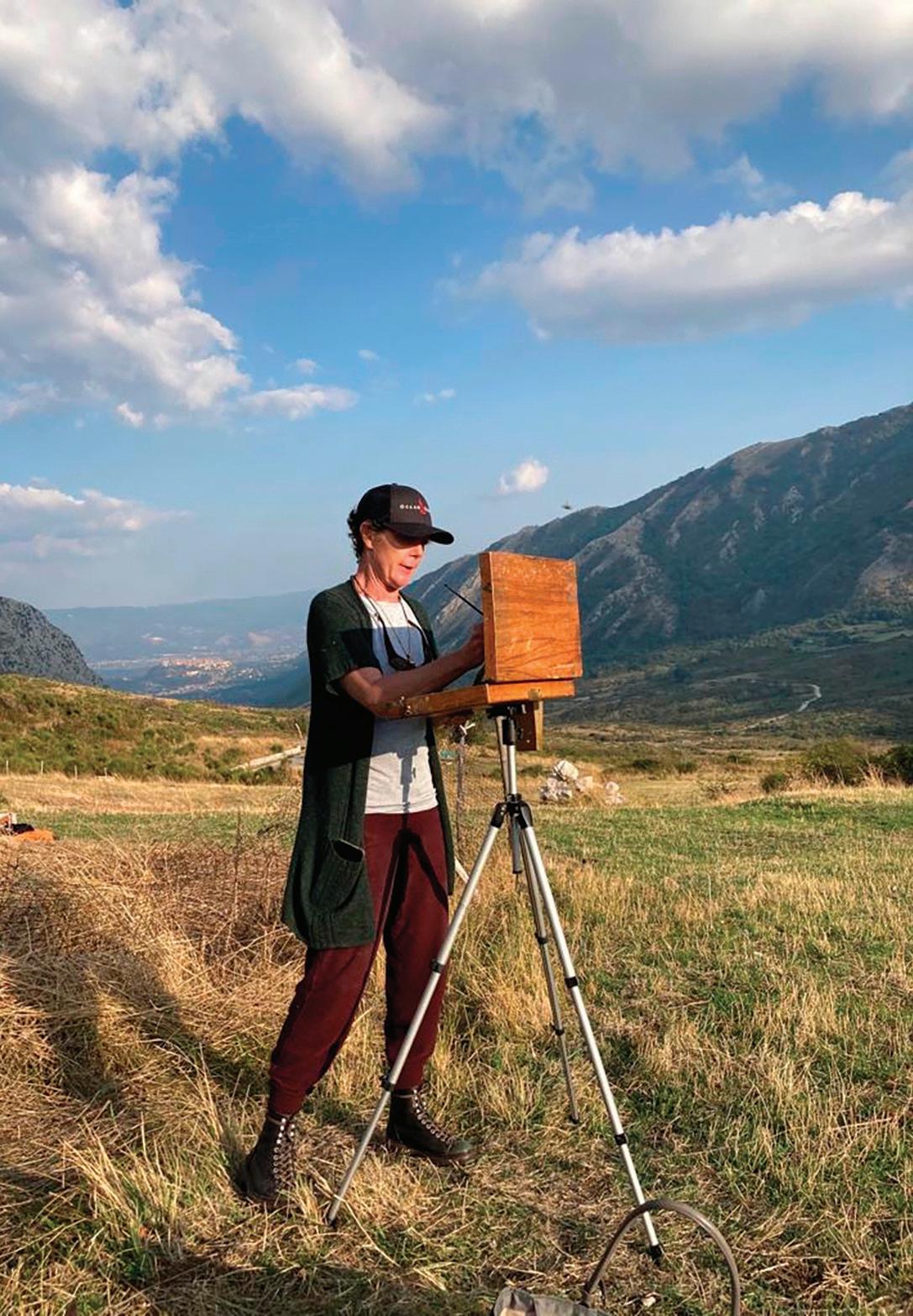
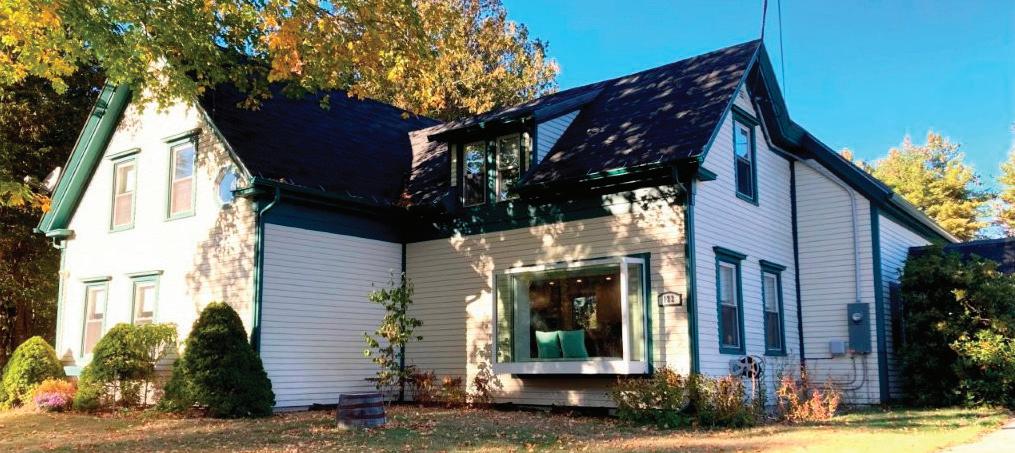
The Cross Road Farm has been in the same family for many years but in the last year has had a total renovation. With three bedrooms, a large main bedroom, a guest bedroom, and a bunk room, two full baths, with double vanities and a soaking tub plus incredible showers in both, the interior is impeccable. There is radiant heat in the floors, an amazing kitchen that seats 8 with a window seat bump out, another sitting area on one end and a cozy living room. The detached barn is 50’ x 34’ with plenty of space for vehicles and storage with a full second story. The 13 acres are a lovely mix of fields and mature pine and fir trees. This property is near beaches, tennis courts, an anchorage with moorings and pier, and halfway between both branches of Acadia National Park, the MDI section as well as the Schoodic section. Within a 2-mile radius there are three great restaurants, one of which is an inn that has been totally renovated with two dining rooms and a bar where old friends gather nightly with live music. Walking distance to interesting hiking trails in conservation with woods and a beach walk. Successful seasonal rental with great reviews, this is a place where people feel comfortable while enjoying Maine for all four seasons. $825,000.













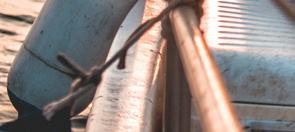










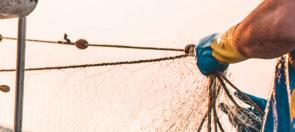






Coastal Maine is changing. Maine’s iconic working waterfronts are a cultural keystone of life here on the coast, but increased challenges, from rising seas and warming waters to soaring costs and regulatory changes, mean that year-round fishing communities are facing an existential threat. YOU CAN MAKE A DIFFERENCE.
At a time when the impacts of climate change and economic uncertainty can feel overwhelming, we are working towards positive, tangible solutions. By donating to Island Institute, your taxdeductible year-end gift will help keep the coast working—and keep communities rooted in the livelihoods that have shaped Maine over generations.

